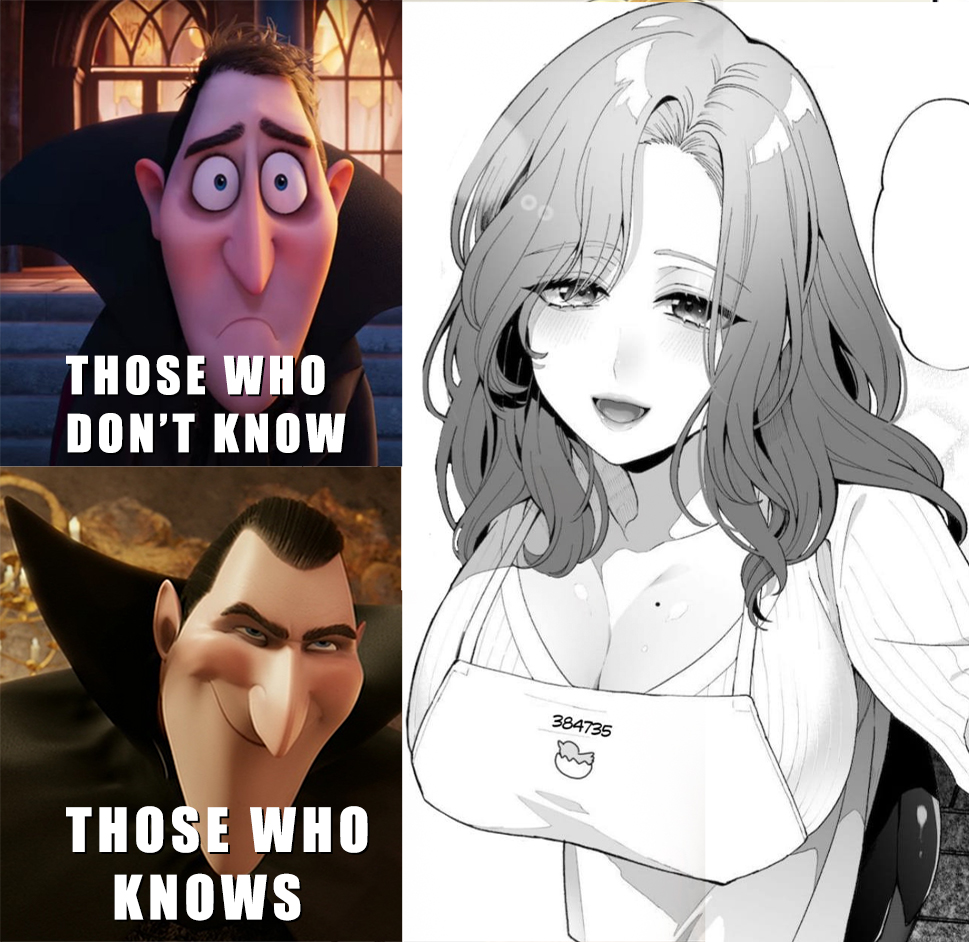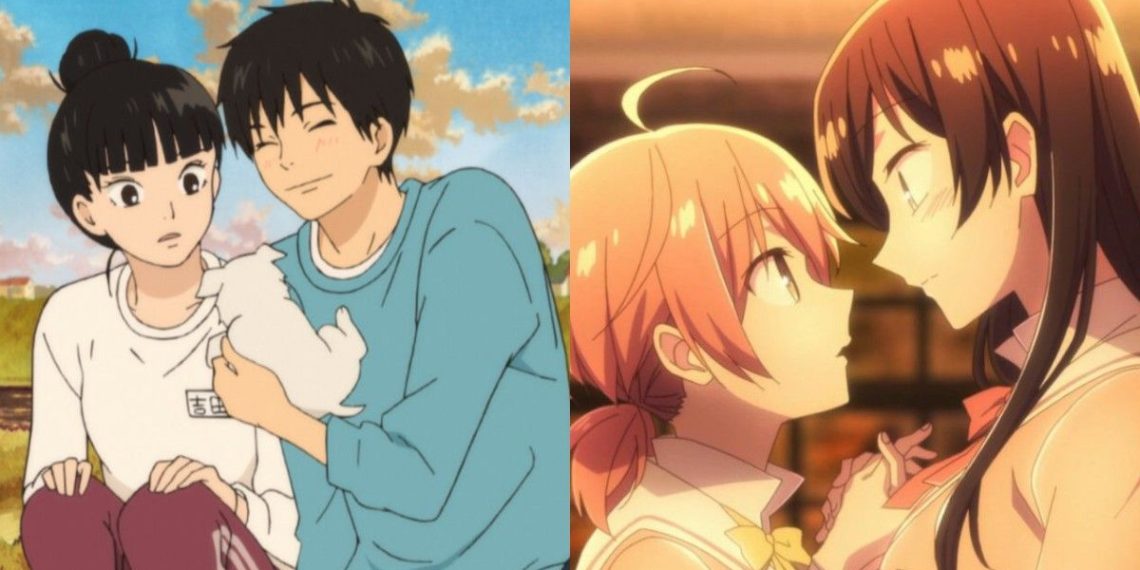The Japanese anime industry offers an astonishing variety of heartfelt romance anime, making it an ideal medium for love stories. The best romance anime can easily rival top shonen action series in both popularity and quality. These series range from heart-wrenching dramas filled with tears and angst to delightful, carefree rom-coms that remind viewers that love is supposed to be fun.
Romance anime explores a remarkable variety of personal themes and settings. High schools often serve as familiar backdrops for tales of young love, while adult-oriented romance anime frequently take place in office settings. More outlandish romances can be found in fantasy and historical settings.
The genre includes everything from stories about star-crossed lovers to wacky harems and intense love triangles. Regardless of the plot, the best romance series are sure to find a place on any anime fan’s list of top anime.
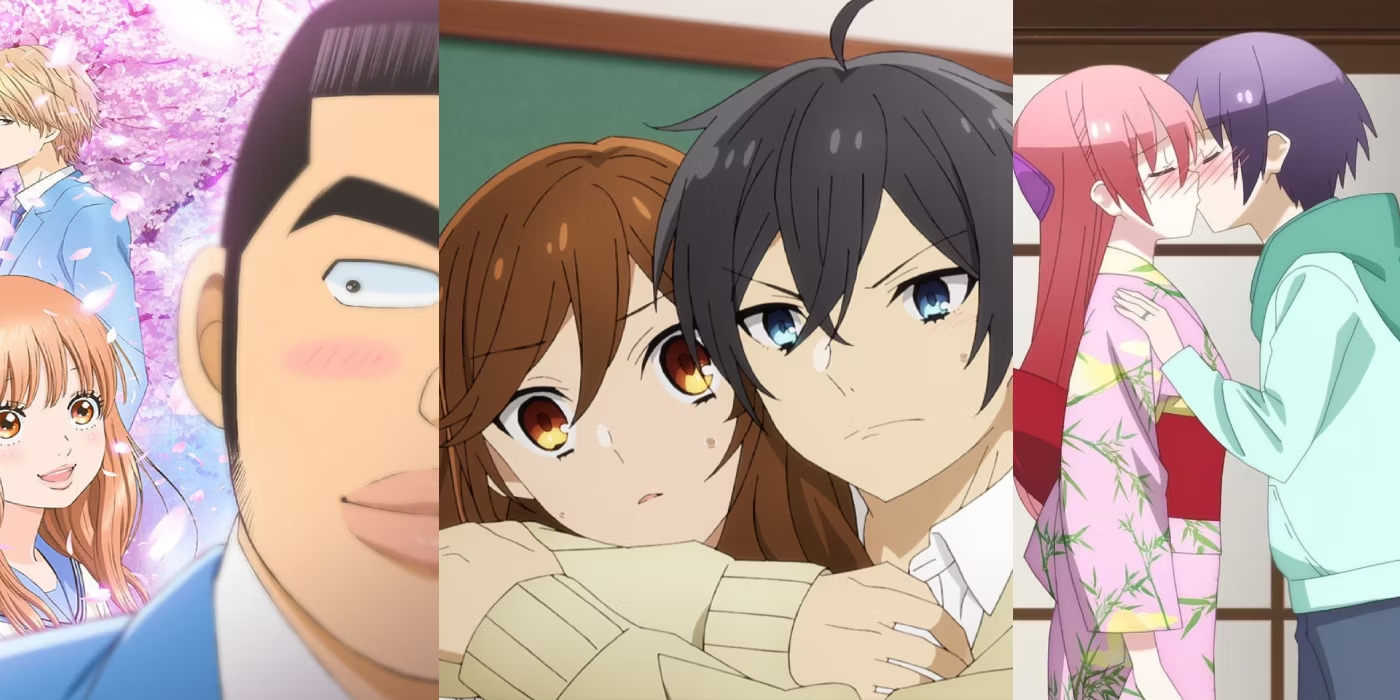
Romance has been a cornerstone of storytelling for centuries, bringing people together but also causing plenty of drama. This is why some of the best anime are romance anime. The finest romance anime offer diverse perspectives and evoke palpable emotions, whether they make viewers laugh or cry.
The best romance anime are those that touch the hearts of their audience. With great new romance anime continuously being released and some forgotten gems being rediscovered, this article has been updated to highlight even more of the best romance anime of all time.
Note: Animes are not shown based on ranking order.
10. My Love Story
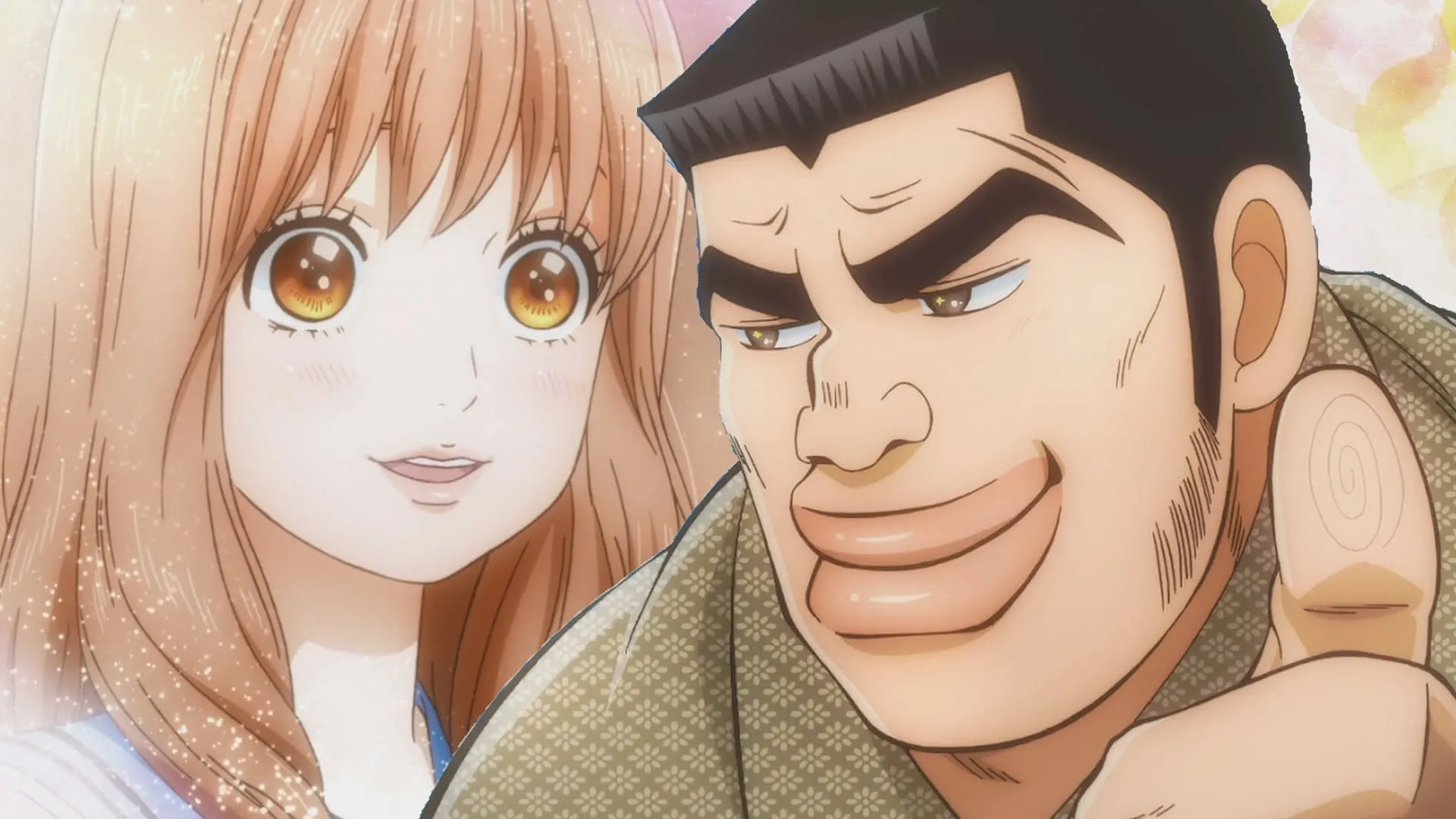
My Love Story!! is a wonderful romantic anime largely due to its main character, Takeo Gouda. This tall, broad, and initially intimidating high schooler falling head-over-heels for the dainty Rinko is undeniably heartwarming. What sets this series apart is seeing Takeo’s genuine efforts to play cupid for Rinko with his best friend, despite his own romantic feelings, showcasing his heart of gold.
Audiences will find themselves rooting wholeheartedly for Takeo and Rinko’s sweet relationship. My Love Story!! doesn’t hold back on delivering heartwarming moments, as the two leads are in a relationship for the majority of the episodes, eschewing the typical slow build to a confession seen in many romance anime.
“My Love Story!!” (Japanese: “Ore Monogatari!!”) is a romantic comedy manga series written by Kazune Kawahara and illustrated by Aruko. It was serialized in Shueisha’s Bessatsu Margaret magazine from October 2011 to July 2016, with its chapters collected in 13 tankōbon volumes.
The series was well-received for its refreshing take on the shoujo genre, focusing on an unconventional male protagonist. “My Love Story!!” was adapted into a popular anime television series by Madhouse, which aired from April to September 2015, and also inspired a live-action film released in 2015.
The story centers on Takeo Gouda, a tall, muscular high school student with a kind heart but an intimidating appearance. Despite his good nature, Takeo is often overshadowed by his best friend, Makoto Sunakawa, who is handsome and popular with girls. Takeo has a history of unrequited crushes, as girls are typically interested in Sunakawa instead.
Takeo’s life changes dramatically when he saves Rinko Yamato, a petite and sweet girl, from a groper on the train. Grateful for his help, Rinko begins to visit Takeo frequently, baking him treats as a thank-you gesture. Initially, Takeo assumes that Rinko is interested in Sunakawa, as has always been the case with girls in the past. However, Sunakawa quickly realizes that Rinko has feelings for Takeo and encourages him to pursue a relationship with her.
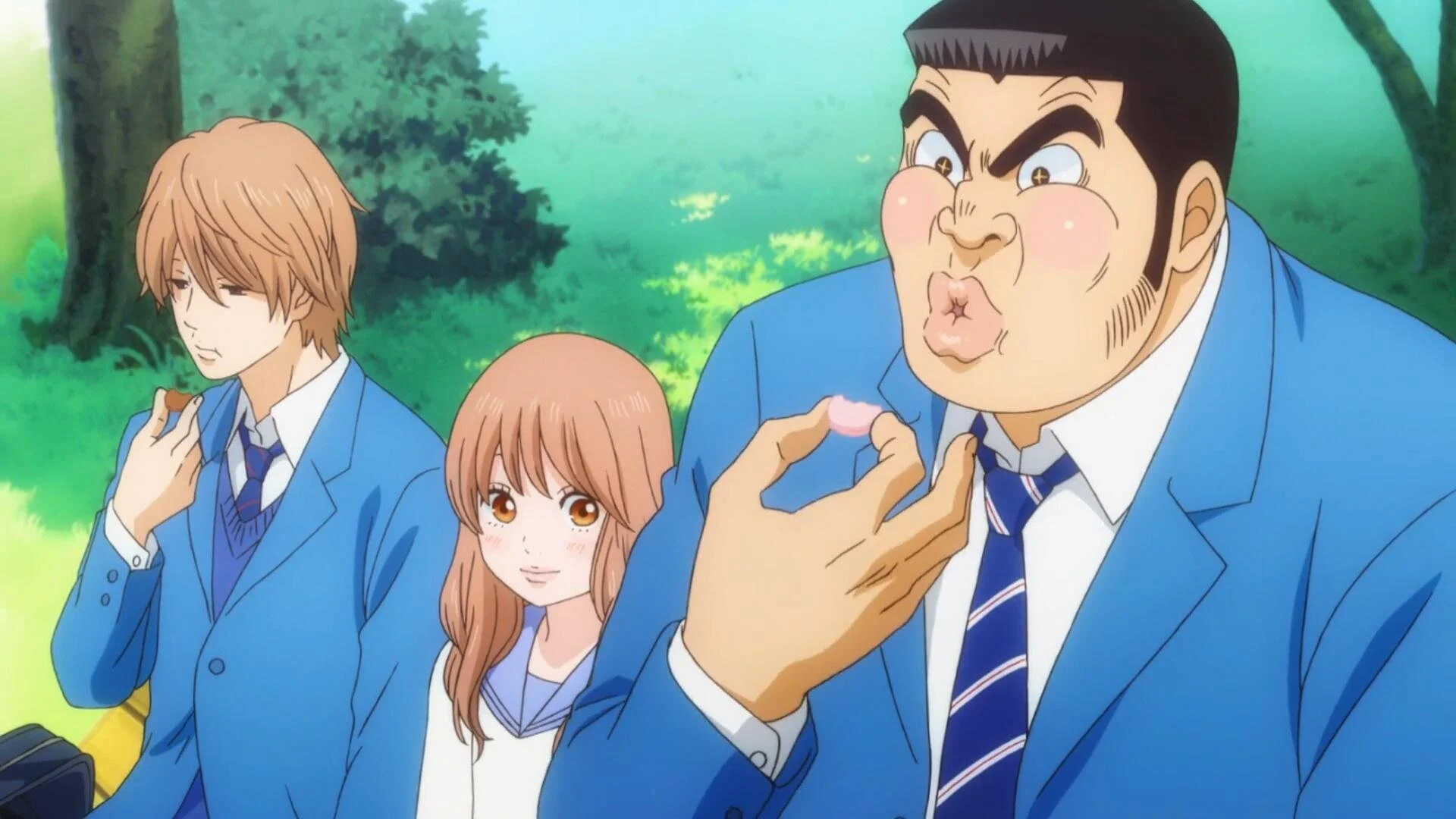
As the series progresses, Takeo and Rinko navigate their new relationship, facing various challenges and growing closer. The story highlights the importance of kindness, loyalty, and the beauty of an unconventional love story.
Takeo Gouda: Takeo is the series’ protagonist. Despite his intimidating appearance, he is gentle, selfless, and always ready to help others. His physical strength contrasts with his tender heart, making him a unique and endearing character. Takeo is deeply loyal to his friends and family, and his relationship with Rinko showcases his capacity for love and affection.
Rinko Yamato: Rinko is the sweet and caring female lead who falls in love with Takeo. She is kind-hearted, enthusiastic, and skilled in baking. Rinko admires Takeo’s strength and kindness, and their relationship is based on mutual respect and affection. Her unwavering support and genuine love for Takeo play a significant role in his growth and confidence.
Makoto Sunakawa: Sunakawa, often referred to as “Suna,” is Takeo’s best friend. Handsome and composed, he is popular with girls but remains indifferent to their advances. Suna’s calm and observant nature provides a balance to Takeo’s exuberance. He values his friendship with Takeo and supports him in his relationship with Rinko, often providing sage advice and encouragement.

One of the standout aspects of “My Love Story!!” is its focus on an unconventional male protagonist. Takeo’s character defies typical shoujo tropes, providing a refreshing perspective on romance. The series emphasizes that love is not limited to appearances and that true beauty lies in one’s actions and character.
The bond between Takeo and Sunakawa is a central theme. Their deep and unwavering friendship highlights the importance of loyalty and support in overcoming personal challenges. Suna’s role in Takeo and Rinko’s relationship demonstrates the value of a true friend who encourages and believes in you.
The series consistently underscores the significance of kindness and compassion. Takeo’s actions, driven by his desire to help others, earn him genuine love and respect. Rinko’s affection for Takeo is rooted in his good heart and selflessness, showcasing the positive impact of treating others with kindness.
Aruko’s artwork in the manga is clean and expressive, effectively conveying the characters’ emotions and the humor of the series. The contrast between Takeo’s imposing appearance and his gentle nature is well-portrayed through the art, enhancing the comedic and heartwarming aspects of the story.
The anime adaptation by Madhouse captures the essence of the manga with vibrant animation and dynamic character designs. The animation is fluid, especially in comedic sequences, and the use of bright colors enhances the cheerful and romantic tone of the series. The voice acting is also notable, with each actor bringing their character to life in a way that complements the narrative.
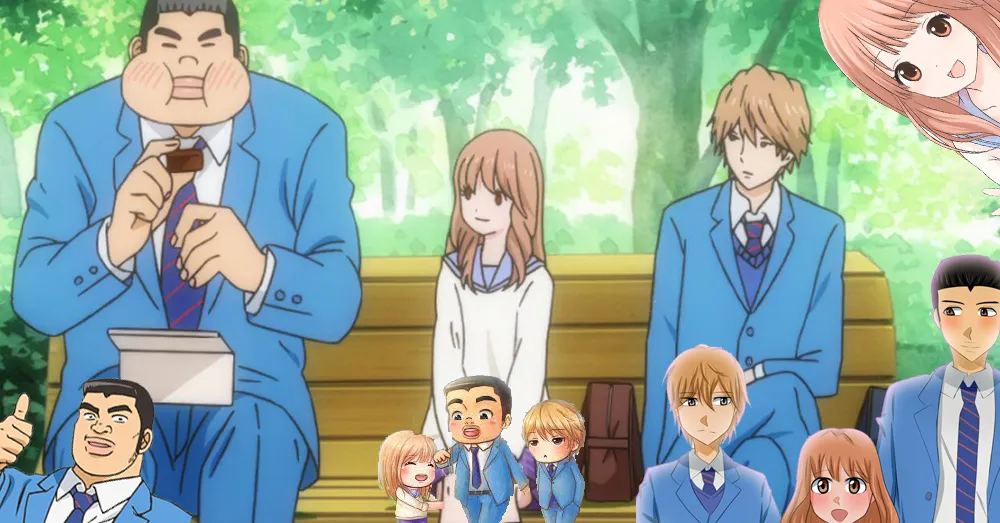
“My Love Story!!” has been praised for its innovative approach to the shoujo genre and its endearing characters. Critics and audiences alike have lauded the series for its humor, heartwarming story, and positive messages about love and friendship. The anime adaptation, in particular, received acclaim for its faithful adaptation of the manga and its high-quality animation.
The series has won several awards, including the Kodansha Manga Award for Best Shoujo Manga in 2013 and the Shogakukan Manga Award for Best Shoujo Manga in 2016. Its popularity has helped it gain a dedicated fanbase and has contributed to a broader appreciation for stories that challenge traditional genre conventions.
“My Love Story!!” is a delightful and heartwarming series that stands out for its unique protagonist and its emphasis on kindness, loyalty, and the true essence of love.
Through its engaging characters and refreshing narrative, the series offers a compelling and humorous take on romance, proving that love transcends appearances and societal expectations. Whether experienced through the manga or the anime adaptation, “My Love Story!!” is a must-read/watch for fans of romantic comedies and shoujo stories that celebrate the beauty of unconventional love.
9. Kimi ni Todoke
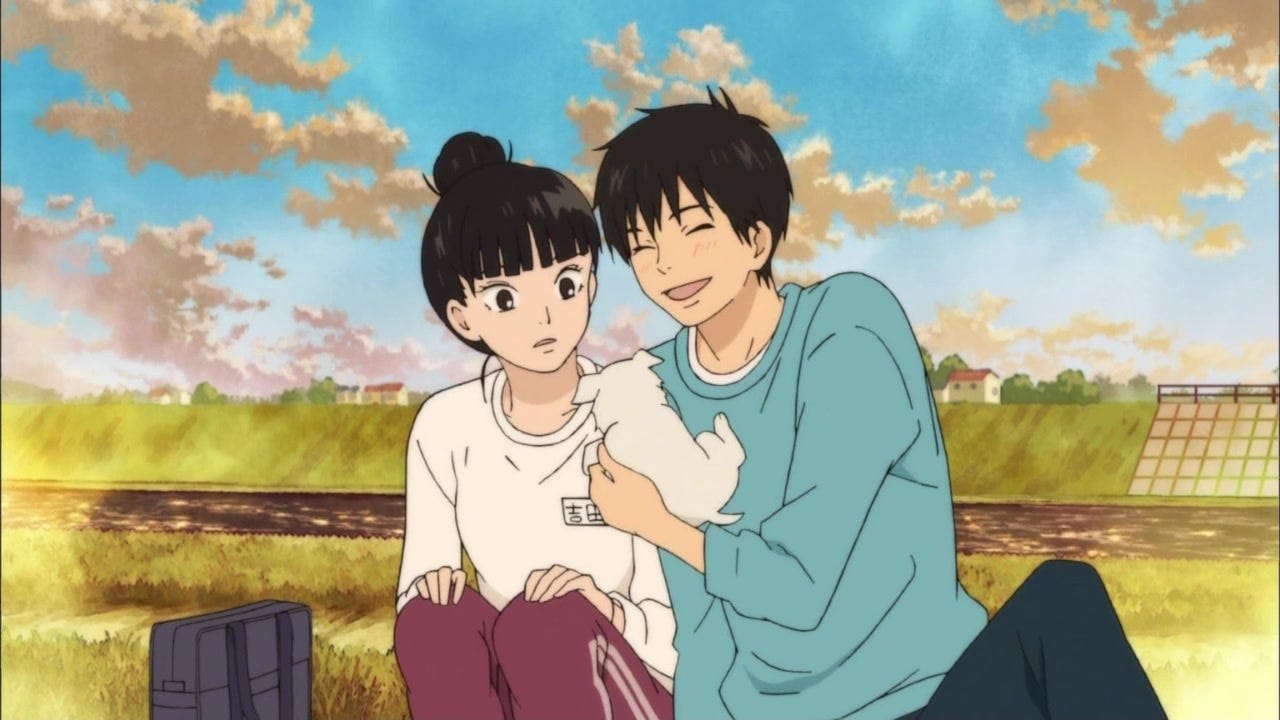
Kimi ni Todoke beautifully demonstrates that opposites can indeed attract, even if the concept has become somewhat cliché in romantic comedies. The anime follows the endearing friendship between the painfully shy Sawako Kuronuma and the popular Shouta Kazehaya.
Sawako, often mocked for her resemblance to Sadako from The Ring, is a lonely figure at school, and it takes considerable effort for her to break out of her shell. Fortunately, Kazehaya proves to be the perfect catalyst for her transformation.
Kimi ni Todoke is a delightful blend of humor, heartwarming moments, and well-written character development. While it does adhere to some common tropes of romance anime, such as delaying certain pivotal scenes, the journey it takes viewers on remains fascinating throughout.
“Kimi ni Todoke: From Me to You” is a Japanese shoujo manga series written and illustrated by Karuho Shiina. The manga was serialized in Bessatsu Margaret from August 2005 to November 2017, and collected in 30 tankōbon volumes by Shueisha.
The series garnered widespread acclaim for its heartwarming story, relatable characters, and beautiful art, leading to several adaptations, including an anime series produced by Production I.G that aired from 2009 to 2011, a live-action film released in 2010, and a live-action TV drama series.
“Kimi ni Todoke” follows the story of Sawako Kuronuma, a shy and socially awkward high school girl who is often misunderstood due to her resemblance to Sadako, the vengeful ghost from the Japanese horror film “The Ring.”
Because of her appearance and demeanor, her classmates avoid her, and she has earned the unfortunate nickname “Sadako.” Despite her frightening exterior, Sawako is kind-hearted, sincere, and wishes to make friends and connect with others.
The story takes a significant turn when Shouta Kazehaya, the most popular boy in school, begins to take an interest in Sawako. Kazehaya is friendly, outgoing, and well-liked by everyone, making him the opposite of Sawako in many ways.
However, he sees her true nature and is drawn to her genuine and gentle personality. Through Kazehaya’s encouragement and support, Sawako slowly starts to come out of her shell, making new friends and experiencing the joys of high school life.
As the series progresses, the focus shifts to the evolving relationships between Sawako and her friends, particularly her budding romance with Kazehaya. It explores themes of self-discovery, friendship, and love, depicting the characters’ emotional growth and the challenges they face.
Sawako Kuronuma: The protagonist of the series, Sawako is a sweet and gentle girl who struggles with social anxiety and is often misunderstood due to her eerie appearance. Her journey of self-discovery and her efforts to connect with others form the heart of the story.
Shouta Kazehaya: The male lead, Kazehaya is the most popular boy in school, known for his friendly and approachable nature. He sees past Sawako’s intimidating exterior and appreciates her for who she truly is. His relationship with Sawako is central to the series, and his support helps her gain confidence.

Ayane Yano and Chizuru Yoshida: Ayane and Chizuru are Sawako’s first real friends. Ayane is intelligent and perceptive, often providing mature and pragmatic advice, while Chizuru is energetic and straightforward, adding a lively dynamic to the group. Their friendship with Sawako is a significant aspect of the series, showcasing the importance of support and acceptance.
Ryu Sanada: Ryu is Kazehaya’s best friend and a close friend of Chizuru. He is quiet and reserved but deeply loyal and caring. His relationship with Chizuru adds another layer of depth to the story.
Ume Kurumi Kurumizawa: Initially portrayed as an antagonist, Kurumi is a pretty and popular girl who has feelings for Kazehaya. Her complex character development highlights themes of jealousy, rivalry, and ultimately, personal growth and understanding.
he series is fundamentally about Sawako’s journey of self-discovery and growth. It explores her struggles with self-esteem and social anxiety, and her gradual transformation as she learns to open up and connect with others.
Kimi ni Todoke places a strong emphasis on the value of friendship. The bonds Sawako forms with Ayane, Chizuru, and others are depicted as essential to her emotional development and happiness. The series portrays how true friends can offer support, encouragement, and a sense of belonging.
The romantic relationship between Sawako and Kazehaya is central to the narrative. Their relationship is characterized by mutual respect, admiration, and a slow, tender progression. The series goes into the nuances of young love, including the excitement, uncertainty, and challenges that come with it.
Sawako’s story is also about overcoming prejudice and misconceptions. Her struggle to be seen for who she truly is rather than how she appears on the outside resonates with themes of acceptance and understanding.
Karuho Shiina’s artwork in the manga is delicate and expressive, effectively conveying the characters’ emotions and the story’s gentle, heartfelt tone. The character designs are distinctive, with particular attention given to Sawako’s transformation as she gains confidence.
The anime adaptation by Production I.G captures the essence of the manga with its beautiful animation and vibrant color palette. The animation quality is consistent, with fluid motion and detailed backgrounds that enhance the series’ atmospheric and emotional scenes. The use of light and shadow, particularly in scenes depicting Sawako’s emotional growth, adds depth to the visual storytelling.
The music in the anime adaptation complements the emotional and atmospheric tone of the series. Composed by S.E.N.S. Project, the soundtrack features a blend of soft, melodic tracks that underscore the series’ heartfelt moments.
The opening themes, “Kimi ni Todoke” by Tanizawa Tomofumi and “Sawakaze” by Teen Top, along with the ending themes, “Kataomoi” by Chara and “Kimi ni Todoke…” by MAY’S, are well-loved for their catchy and fitting melodies.
“Kimi ni Todoke” has been widely praised for its heartwarming story, well-developed characters, and emotional depth. Critics and audiences have lauded the series for its positive portrayal of friendship and love, as well as its sensitive handling of themes like social anxiety and personal growth.
The manga has won several awards, including the Kodansha Manga Award for Best Shoujo Manga in 2008. Its popularity has extended beyond Japan, earning a dedicated international fanbase.
The anime adaptation has also received positive reviews for its faithful representation of the manga and high production quality. Fans appreciate the emotional resonance and relatable characters, making it a standout series in the shoujo genre.
“Kimi ni Todoke: From Me to You” is a touching and beautifully crafted series that explores themes of self-discovery, friendship, and love. Through the story of Sawako Kuronuma, the series goes into the struggles and triumphs of overcoming social anxiety and finding one’s place in the world.
With its compelling characters, heartfelt narrative, and stunning art, “Kimi ni Todoke” is a must-read and must-watch for fans of shoujo manga and anime. Its message of acceptance, kindness, and the transformative power of genuine connections continues to resonate with audiences, making it a timeless and beloved series.
8. Ouran High School Host Club

Ouran High School Host Club is a delightful reverse harem anime that is brimming with lighthearted humor and poignant moments. When Haruhi Fujioka accidentally breaks an antique vase belonging to her school’s Host Club, she finds herself in debt and must repay it by disguising herself as a boy and working as a host alongside the club’s other members.
The series excels in its character development, skillfully fleshing out not only Haruhi’s character and motivations but also those of her fellow hosts. It’s a must-watch for fans of shojo anime, featuring a memorable cast of characters who carry the show with their charm and charisma throughout its run.
“Ouran High School Host Club” (Japanese: “Ōran Kōkō Hosuto Kurabu”) is a Japanese manga series written and illustrated by Bisco Hatori. The series was serialized in Hakusensha’s LaLa magazine from September 2002 to November 2010 and collected in 18 tankōbon volumes. The story’s popularity led to an anime adaptation by studio Bones, which aired from April to September 2006, as well as a live-action television drama and a live-action film.
“Ouran High School Host Club” is a comedic and romantic series set in the elite Ouran Academy, a prestigious private school attended by students from wealthy families. The story revolves around Haruhi Fujioka, a scholarship student who comes from a modest background.
While searching for a quiet place to study, Haruhi stumbles upon the Third Music Room, which turns out to be the headquarters of the school’s Host Club—a group of attractive male students who entertain female clients with tea, sweets, and charming conversation.
Mistaken for a boy due to her short hair and androgynous appearance, Haruhi accidentally breaks an expensive vase valued at 8 million yen. To repay the debt, she is forced to join the Host Club as a host, concealing her true gender. The club members soon discover Haruhi’s secret but decide to keep it from the clients.
As Haruhi becomes an integral part of the club, she forms close bonds with the other members, each with their own unique personalities and backgrounds.
Haruhi Fujioka: The protagonist of the series, Haruhi is a pragmatic and intelligent student who values hard work and education. Her down-to-earth nature contrasts with the opulence of Ouran Academy. Despite her initial reluctance, Haruhi grows to care deeply for her fellow club members and enjoys her time in the Host Club.
Tamaki Suoh: The flamboyant and charismatic president of the Host Club, Tamaki is half-French and half-Japanese. He is passionate about entertaining and making others happy, often referring to himself as the “prince” of the club. Tamaki is genuinely kind-hearted and gradually develops romantic feelings for Haruhi, though he initially perceives them as fatherly affection.
Kyoya Ootori: The vice-president and “shadow king” of the Host Club, Kyoya is calculating, intelligent, and the financial brain behind the club. He comes from a powerful family and often uses his strategic mind to manage the club’s activities. Despite his cool demeanor, Kyoya cares deeply for his friends.

Hikaru and Kaoru Hitachiin: The mischievous and identical Hitachiin twins are masters of the “forbidden brotherly love” act, delighting clients with their playful and teasing behavior. They have a close, almost inseparable bond, but their time with Haruhi helps them develop individual identities.
Mitsukuni “Honey” Haninozuka: Often referred to as “Honey,” Mitsukuni is a small, cute boy with a love for sweets and stuffed animals. Despite his childlike appearance, he is a martial arts master and one of the club’s most popular hosts. He often carries a stuffed bunny named Usa-chan.
Takashi “Mori” Morinozuka: Mori is Honey’s stoic and protective cousin, often seen by his side. He is quiet and serious but deeply loyal and caring towards his friends. His strength and calm demeanor make him a reliable presence in the club.
The series explores the contrast between Haruhi’s modest background and the extravagant world of her wealthy classmates. Through Haruhi’s eyes, the story critiques the excesses of the elite while highlighting the common humanity that transcends social status.
Haruhi’s gender-bending role in the Host Club challenges traditional gender norms and expectations. Her character defies conventional femininity, offering a progressive portrayal of a female lead who is confident, capable, and unfazed by societal labels.
The relationships between the Host Club members are central to the series. Each character undergoes personal growth through their interactions with Haruhi and each other, emphasizing the importance of friendship, loyalty, and mutual support.
Ouran High School Host Club blends comedy and romance, using humor to address serious themes while providing light-hearted entertainment. The romantic developments, particularly between Haruhi and Tamaki, are slow-burning and filled with comedic misunderstandings and heartfelt moments.
Bisco Hatori’s artwork in the manga is characterized by clean lines, expressive faces, and elaborate character designs that capture the elegance and charm of the Host Club members. The manga’s visual style effectively balances humor and drama, with exaggerated expressions and dynamic panels enhancing the comedic scenes.
The anime adaptation by Bones faithfully captures the manga’s aesthetic, with fluid animation and vibrant colors that bring the characters and their world to life. The animation quality is consistent, with attention to detail in the character designs and backgrounds. The anime’s use of visual gags, such as chibi-style drawings and dramatic shifts in art style, complements the series’ comedic tone.
The music in the anime adaptation enhances the whimsical and romantic atmosphere of the series. The opening theme, “Sakura Kiss” by Chieko Kawabe, is upbeat and catchy, setting the tone for the series’ playful nature. The ending theme, “Shissou” by Last Alliance, provides a contrasting energetic rock sound that leaves a memorable impression.
The soundtrack, composed by Yoshihisa Hirano, features a mix of classical and contemporary pieces that underscore the series’ various moods, from comedic moments to heartfelt scenes. The music effectively supports the narrative, adding depth to the characters’ emotions and the ambiance.
“Ouran High School Host Club” has been widely praised for its engaging story, memorable characters, and clever humor. Critics and audiences have lauded the series for its unique take on the reverse harem genre, its exploration of social themes, and its subversion of gender norms. The character development and interactions, particularly Haruhi’s influence on the other club members, are often highlighted as key strengths.
The manga and anime have both achieved significant commercial success, leading to a dedicated fanbase and continued popularity over the years. The series’ impact extends beyond its original publication and broadcast, with its themes and characters resonating with a broad audience.
“Ouran High School Host Club” is a delightful and thought-provoking series that combines humor, romance, and social commentary in a unique and engaging way. Through its charming characters and entertaining narrative, the series explores themes of friendship, identity, and the complexities of social status.
Whether experienced through the manga or the anime adaptation, “Ouran High School Host Club” offers a heartwarming and memorable journey that continues to excite fans around the world. Its blend of comedy, romance, and insightful themes makes it a standout series in the shoujo genre and a timeless favorite for many.
7. Insomniacs After School
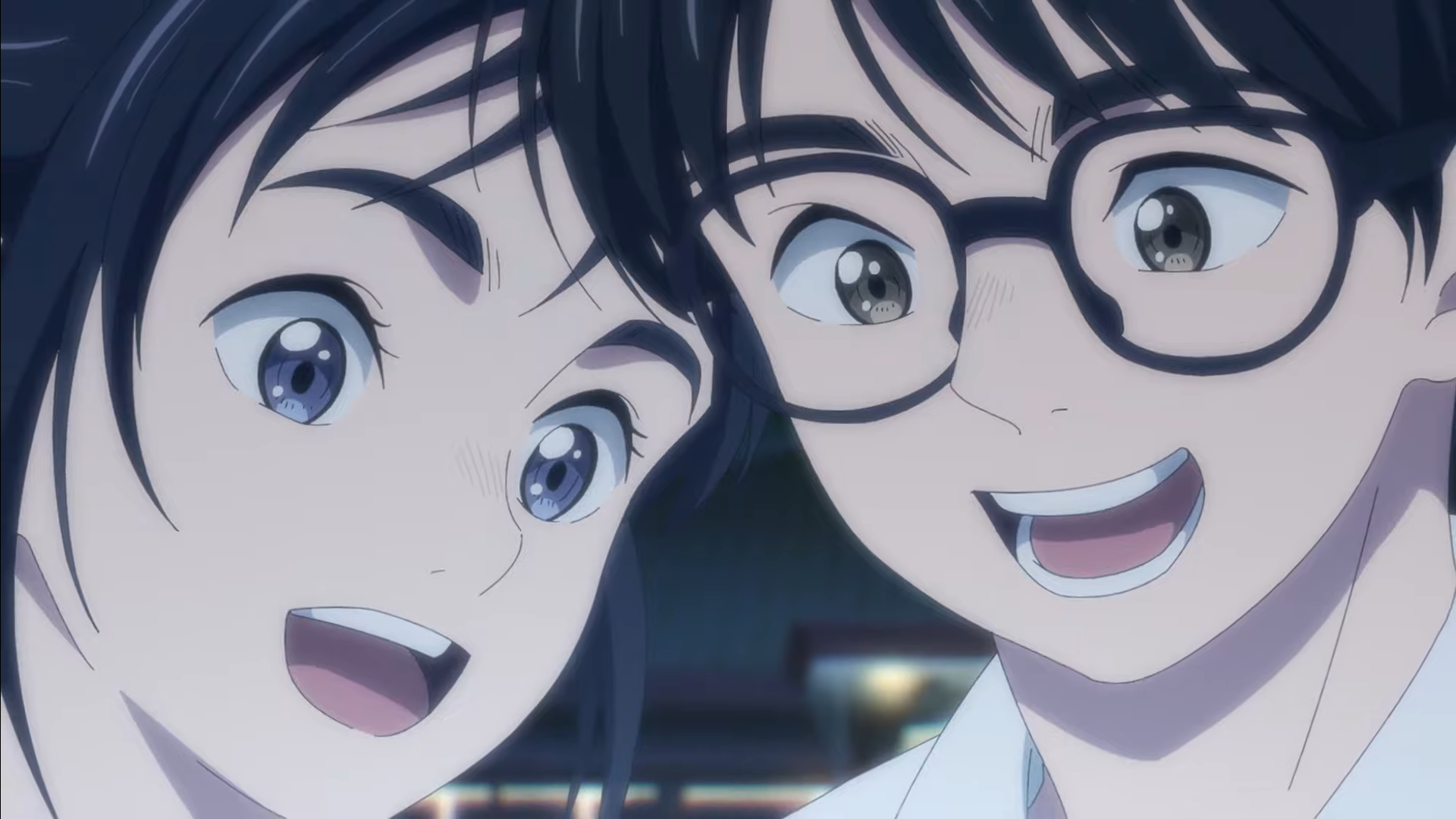
Insomniacs After School stood out as the crowning achievement of Spring 2023 in terms of pure romance. Adapted from Makoto Ojiro’s esteemed seinen manga, the anime follows the story of two students burdened by the inability to fall asleep, a curse they had carried alone until fate brought them together at their school’s observatory.
In this unlikely setting, Isaki and Ganta form an instant connection, one that blossoms as they look on a mission to revitalize the Astronomy Club, fueled by their desire to preserve their newfound sanctuary.
With its pitch-perfect pacing, Insomniacs After School masterfully captures the essence of its characters’ struggles with insomnia while also showcasing the subtle comforts they find in each other’s company. While the anime is ripe with romantic tension, it prioritizes the development of Ganta and Isaki’s friendship, highlighting the deeper emotional connection they share beyond their shared affliction.
“Insomniacs After School” (Japanese: “Kimi wa Houkago Insomnia”) is a Japanese manga series written and illustrated by Makoto Ojiro. The manga began serialization in Shogakukan’s Weekly Big Comic Spirits in May 2019.
The series has been praised for its sensitive portrayal of youth, insomnia, and the deep emotional connections formed between its characters. In 2023, the manga was adapted into an anime television series by Liden Films, further increasing its popularity and reach.
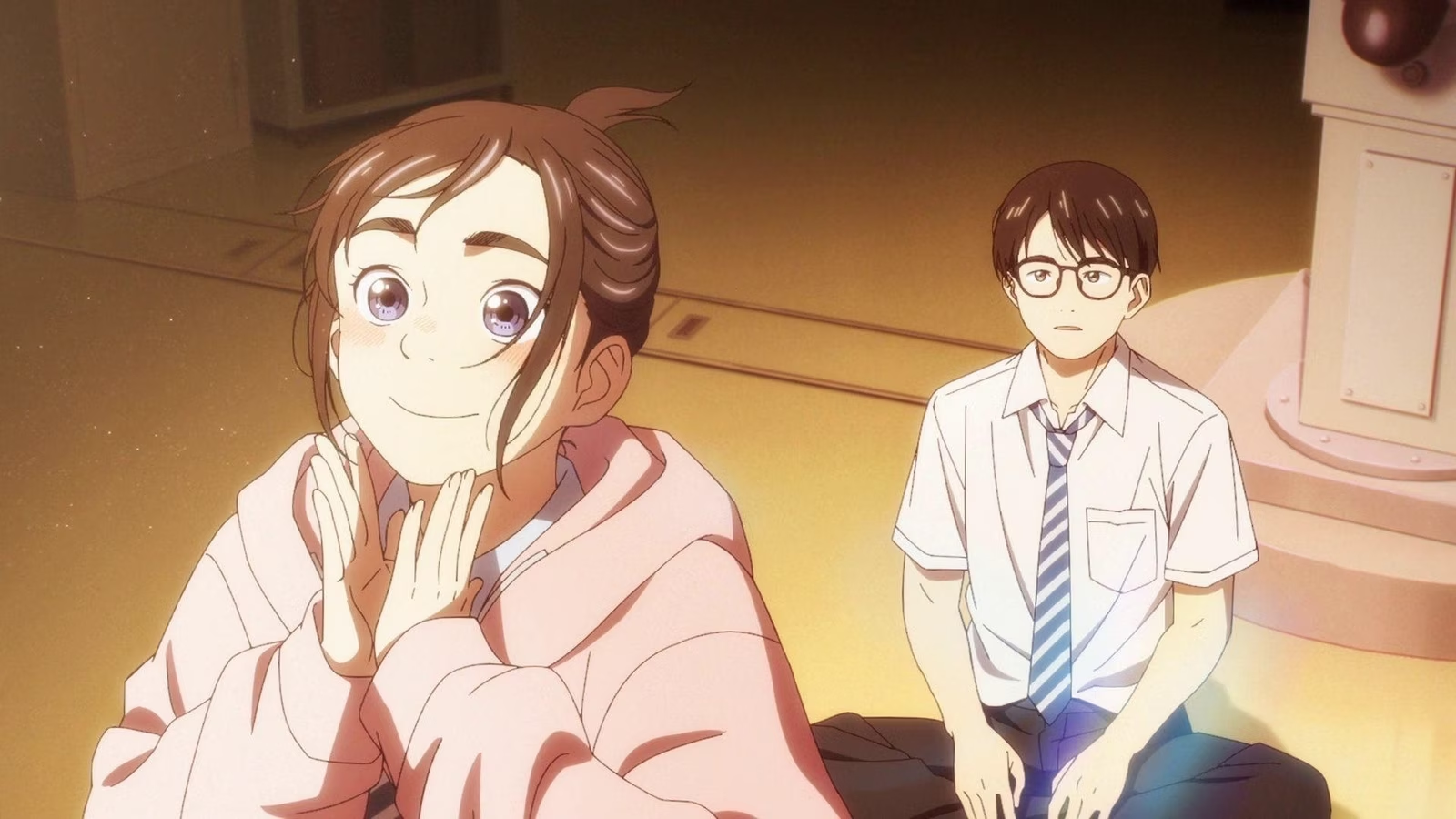
“Insomniacs After School” centers on two high school students, Ganta Nakami and Isaki Magari, who both suffer from chronic insomnia. Their sleeplessness and the resulting fatigue significantly impact their daily lives, making them feel isolated from their peers who cannot understand their struggles.
The story begins when Ganta discovers an abandoned observatory at their school, previously used by the now-defunct astronomy club. Seeking a quiet place to rest, he meets Isaki, who has also found refuge in the observatory to cope with her own insomnia. Realizing they share the same condition, the two form an unexpected bond and decide to revive the astronomy club. The observatory becomes their sanctuary, a place where they can relax, sleep, and escape the pressures of daily life.
As they spend more time together, Ganta and Isaki explore their mutual interest in astronomy, develop a deeper friendship, and begin to navigate the complexities of their emotions and teenage life. The series beautifully captures their journey of self-discovery, the struggles of dealing with insomnia, and the comfort they find in each other.
Ganta Nakami: The male protagonist, Ganta is a high school student who struggles with chronic insomnia. His condition makes him irritable and distant, as he often feels misunderstood by his classmates. Ganta’s discovery of the abandoned observatory and his friendship with Isaki provide him with a sense of belonging and understanding he has been missing.
Isaki Magari: The female protagonist, Isaki also suffers from insomnia and has been using the observatory as a hideaway to cope with her sleepless nights. Isaki is cheerful and resilient, hiding her struggles behind a bright demeanor. Her bond with Ganta helps her open up about her condition and find solace in their shared experiences.
Kanami Anamizu: A supportive friend who helps Ganta and Isaki in their endeavors to revive the astronomy club. Kanami’s presence adds to the sense of camaraderie and community within the story.
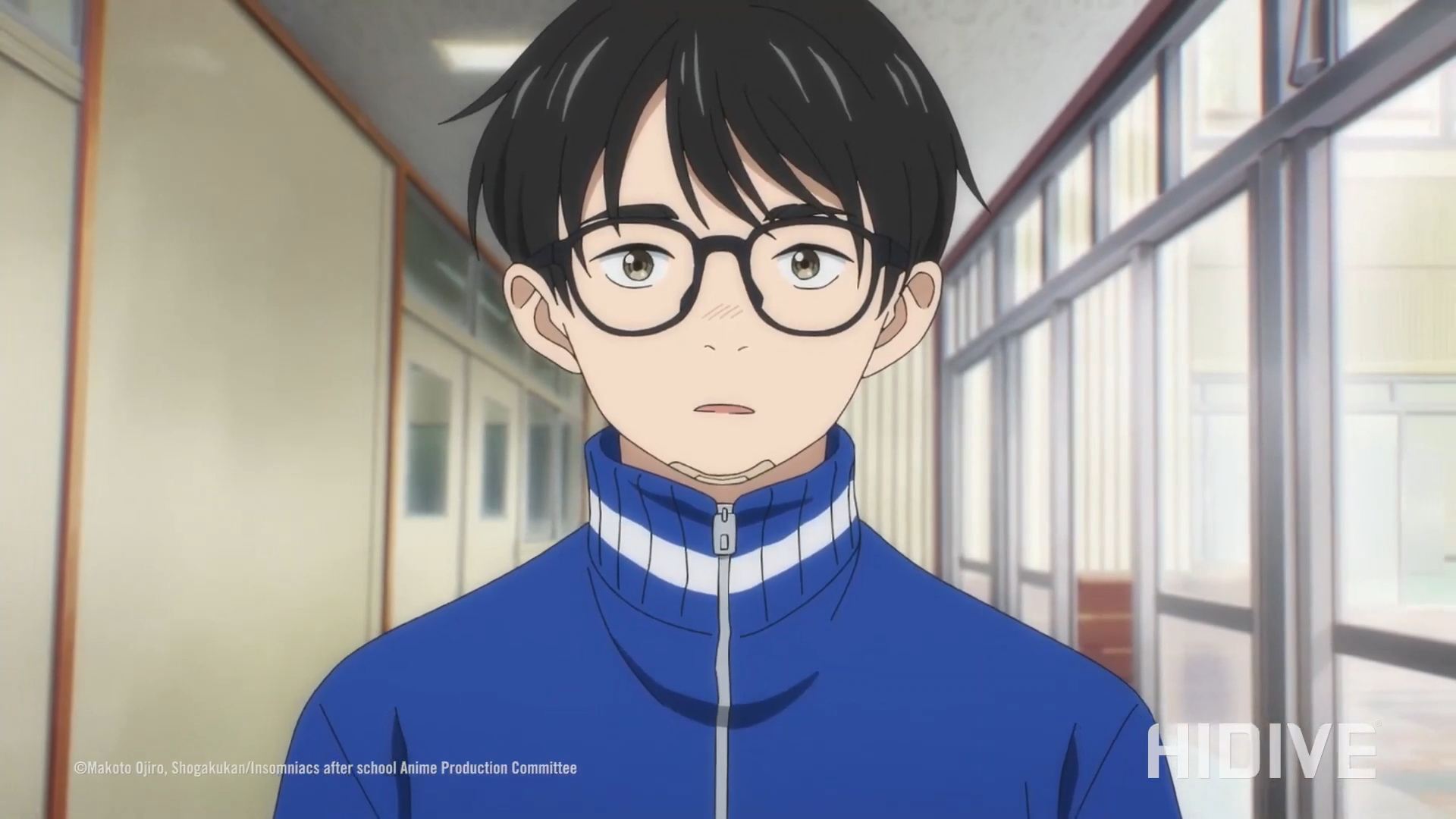
The series provides a thoughtful and nuanced portrayal of insomnia and its impact on mental health. It goes into the loneliness and frustration experienced by those who struggle with sleep disorders, highlighting the importance of understanding and empathy.
At its core, “Insomniacs After School” is about the deep emotional connection between Ganta and Isaki. Their friendship evolves into a supportive and nurturing relationship, demonstrating the healing power of companionship and mutual understanding.
Both protagonists undergo significant personal growth throughout the series. Their journey is marked by self-discovery, acceptance, and the courage to confront their vulnerabilities. The revival of the astronomy club serves as a metaphor for their newfound purpose and the rekindling of their dreams.
The series incorporates a love for astronomy, using the night sky as a symbol of hope and endless possibilities. The observatory becomes a place of wonder and exploration, mirroring the characters’ internal journeys.
Makoto Ojiro’s artwork in the manga is detailed and expressive, capturing the subtleties of the characters’ emotions and the serene beauty of the night sky. The use of light and shadow effectively conveys the themes of insomnia and the search for peace in the quiet of the night.
The anime adaptation by Liden Films faithfully brings the manga to life with its high-quality animation and attention to detail. The character designs are consistent with the manga, and the animation captures the serene and contemplative atmosphere of the story. The use of soft color palettes and ambient lighting enhances the dreamlike quality of the series, particularly in scenes set under the stars.

The music in the anime adaptation complements the series’ tone with a soothing and atmospheric soundtrack. The opening theme, “Yofukashi no Uta” by Creepy Nuts, sets the stage for the series’ nocturnal setting and introspective mood. The ending theme, “Namida no Yukue” by Saku, provides a gentle and reflective conclusion to each episode, underscoring the emotional depth of the story.
“Insomniacs After School” has been well-received for its heartfelt storytelling, relatable characters, and sensitive handling of mental health issues. Critics and audiences have praised the series for its realistic portrayal of insomnia and the emotional resonance of Ganta and Isaki’s relationship.
The manga’s success led to a significant following, and the anime adaptation has further expanded its reach, attracting new fans and garnering positive reviews for its faithful adaptation and high production quality. The series has been noted for its ability to address serious topics with empathy and authenticity, making it a standout in the slice-of-life genre.
“Insomniacs After School” is a poignant and beautifully crafted series that explores the challenges of insomnia and the healing power of friendship and emotional connection. Through the journey of Ganta and Isaki, the series goes into themes of mental health, self-discovery, and the wonders of the night sky.
With its expressive artwork, soothing music, and heartfelt narrative, “Insomniacs After School” offers a deeply moving and relatable story that resonates with audiences, making it a must-read manga and a must-watch anime for fans of emotional and contemplative storytelling.
6. Toradora!
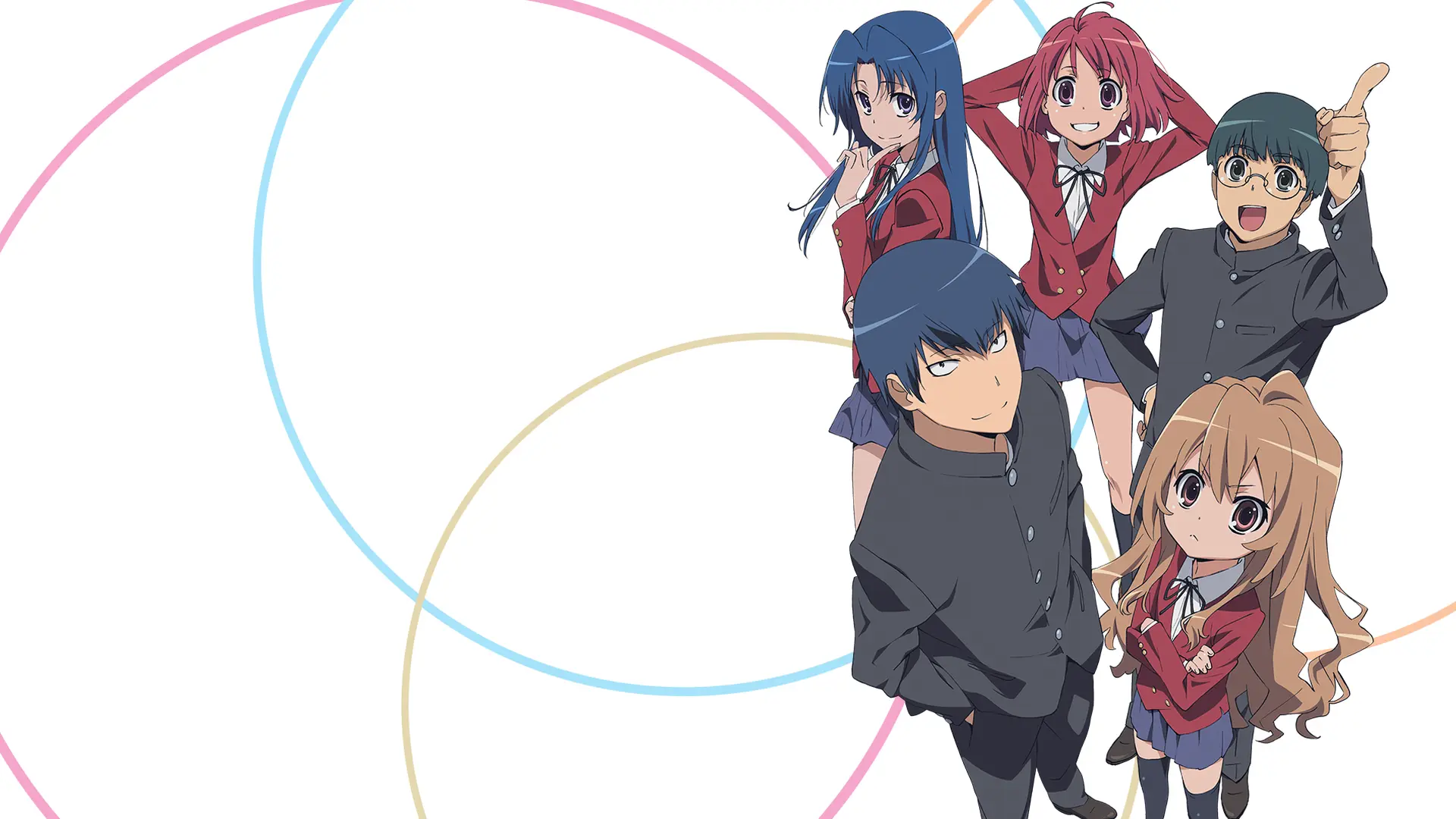
Toradora! is a timeless slice-of-life romantic comedy that serves as an excellent entry point into the genre. The story revolves around Ryuji Yusaku and Taiga Aisaka, two high school students who have crushes on each other’s best friends.
Both Ryuji and Taiga are considered outcasts at school—Ryuji because of his intimidating appearance and Taiga due to her fiery temper. Despite their differences, they form an unlikely alliance to assist each other in their romantic pursuits. The series looks into the dynamic between the two protagonists and the humorous misadventures that ensue as they navigate the complexities of love and friendship.
“Toradora!” is a Japanese light novel series written by Yuyuko Takemiya and illustrated by Yasu. It was later adapted into various media formats, including a manga series, a visual novel, and most notably, an anime television series. The anime adaptation, produced by J.C.Staff, aired from October 2008 to March 2009 and has since gained widespread acclaim for its compelling characters, engaging storyline, and emotional depth.
“Toradora!” primarily takes place in a high school setting and revolves around the lives of two unlikely protagonists: Ryuuji Takasu and Taiga Aisaka. Ryuuji is a kind-hearted but misunderstood high school student with an intimidating appearance due to his inherited “delinquent” eyes. Taiga, on the other hand, is a small, feisty girl known for her aggressive personality, earning her the nickname “Palmtop Tiger.”
Despite their contrasting personalities, Ryuuji and Taiga form an unlikely alliance when they discover they have crushes on each other’s best friends. They agree to help each other pursue their respective romantic interests while navigating the complexities of high school life and relationships.
As they spend more time together, Ryuuji and Taiga develop a close bond and begin to understand each other’s struggles, leading to unexpected feelings and revelations.
Ryuuji Takasu: The male protagonist of the series, Ryuuji is a diligent and caring student with a talent for domestic chores, inherited from his single mother who works as a hostess. Despite his intimidating appearance, Ryuuji is gentle and compassionate, often putting others’ needs before his own. He harbors feelings for Taiga’s best friend, Minori Kushieda, and initially agrees to help Taiga pursue his best friend, Yuusaku Kitamura.
Taiga Aisaka: The female protagonist, Taiga is a petite but fiercely independent girl with a reputation for her short temper and aggressive behavior. She comes from a wealthy family but lives alone in a small apartment. Taiga harbors feelings for Ryuuji’s best friend, Yuusaku Kitamura, and enlists Ryuuji’s help to get closer to him. Despite her tough exterior, Taiga is vulnerable and struggles with her own insecurities.
Minori Kushieda: Minori is Ryuuji’s classmate and Taiga’s best friend. She is energetic, cheerful, and known for her eccentric personality. Minori works multiple part-time jobs to support herself and harbors a complicated relationship with Taiga’s other best friend, Yuusaku Kitamura.

Yuusaku Kitamura: Yuusaku is Ryuuji’s best friend and a classmate of Taiga and Minori. He is the vice-president of the student council and is admired by his peers for his leadership qualities and friendly demeanor. Yuusaku has a complex relationship with Minori and is unaware of Taiga’s feelings for him.
“Toradora!” explores the dynamics of friendship, love, and personal growth. The series highlights the complexities of relationships and the emotional challenges faced by its characters as they navigate adolescence and romance.
The protagonists go on journeys of self-discovery, learning to confront their fears, insecurities, and misconceptions about themselves and others. Through their interactions with each other, they gradually gain insight into their own desires, values, and aspirations.
The series also goes into the impact of family dynamics on the characters’ lives. Ryuuji’s close relationship with his mother and Taiga’s strained relationship with her wealthy parents play significant roles in shaping their identities and influencing their actions.
“Toradora!” addresses societal expectations and stereotypes, particularly regarding appearances and social status. The characters challenge these norms and learn to look beyond surface impressions to discover the true essence of themselves and others.
The anime adaptation of “Toradora!” features vibrant visuals, expressive character designs, and fluid animation that bring the story to life. The artwork effectively captures the emotional depth of the characters and the comedic moments of the series. The use of color and lighting enhances the mood and atmosphere of each scene, from lighthearted comedic moments to poignant emotional exchanges.
The music in “Toradora!” complements the series’ emotional depth and narrative progression. The opening theme, “Pre-Parade” by Rie Kugimiya, Yui Horie, and Eri Kitamura, sets the tone for the series with its upbeat and catchy melody. The ending theme, “Vanilla Salt” by Yui Horie, offers a soothing and nostalgic conclusion to each episode, leaving a lasting impression on viewers.
“Toradora!” has received widespread acclaim from both critics and audiences for its compelling characters, well-developed storyline, and emotional depth. The series has been praised for its realistic portrayal of adolescence, romance, and friendship, as well as its ability to balance comedic moments with heartfelt drama.
The anime adaptation in particular has gained a dedicated fanbase and has been celebrated as one of the best romantic comedies in the genre. Its memorable characters, engaging storyline, and emotional resonance have solidified its status as a beloved classic in the anime community. “Toradora!” is a nice and emotionally resonant series that offers a heartfelt exploration of friendship, love, and self-discovery.
Through its compelling characters, engaging storyline, and poignant themes, the series leaves a lasting impression on viewers, reminding them of the transformative power of genuine connections and the beauty of embracing one’s true self.
Whether experienced through the light novels, manga, or anime adaptation, “Toradora!” continues to enchant audiences with its timeless appeal and enduring message of hope and redemption.
5. Rascal Does Not Dream of Bunny Girl Senpai
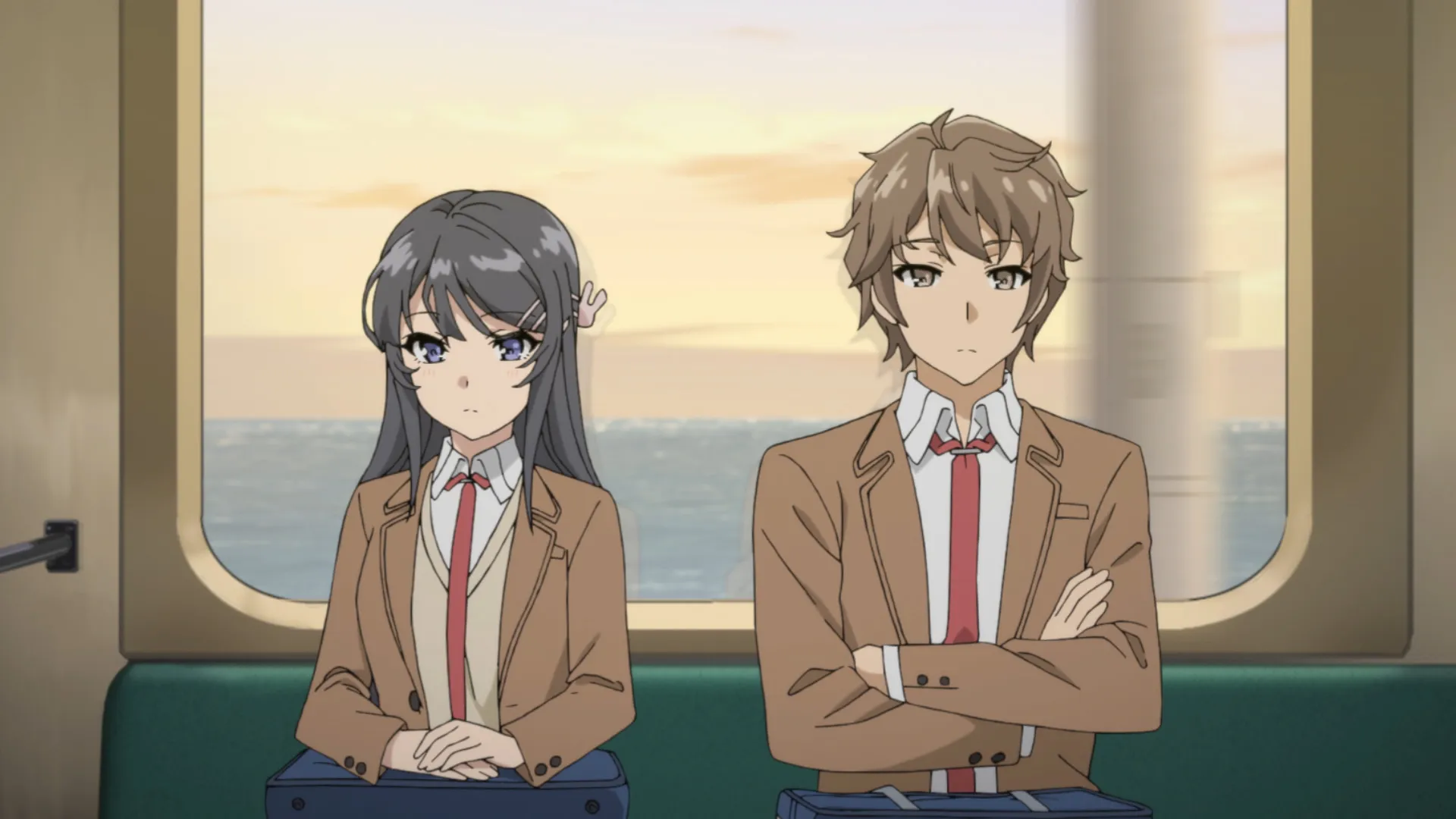
In Rascal Does Not Dream Of Bunny Girl Senpai, romance takes a backseat while simultaneously being the best part of the series. The anime centers around Sakuta Azusagawa, a high school student who has a knack for encountering girls suffering from Adolescence Syndrome, a condition stemming from their insecurities.
While the series features multiple story arcs focusing on different girls, the standout is the first saga involving Mai Sakurajima, an actress who forms a close bond with Sakuta.
The chemistry between Sakuta and Mai is palpable, filled with romantic tension, warmth, and clever banter. Though romance isn’t always the primary focus, their relationship develops beautifully across the remaining arcs, leading to a satisfying conclusion in the feature film sequel.
“Rascal Does Not Dream of Bunny Girl Senpai,” also known as “Seishun Buta Yarou wa Bunny Girl Senpai no Yume wo Minai” in Japanese, is a light novel series written by Hajime Kamoshida and illustrated by Keeji Mizoguchi. The series began serialization in April 2014 and has since garnered widespread acclaim for its unique premise, compelling characters, and exploration of adolescent struggles and psychological phenomena.

The story follows Sakuta Azusagawa, a high school student who encounters various supernatural phenomena known as “adolescent syndrome.” The syndrome manifests as unusual and inexplicable occurrences that affect individuals undergoing emotional distress or social isolation.
Sakuta encounters several girls afflicted by this syndrome, including Mai Sakurajima, a former child actress who now experiences “puberty syndrome” in the form of invisible phenomena that cause her to go unnoticed by others, leading to her wearing a bunny girl costume in public to attract attention.
As Sakuta helps Mai resolve her syndrome, he forms deep connections with other girls facing similar challenges, including his sister Kaede and his classmates Tomoe Koga, Rio Futaba, and Nodoka Toyohama. Each arc of the series explores themes of identity, social pressure, and the complexity of human relationships, all set against the backdrop of Sakuta’s daily life and his evolving romance with Mai.
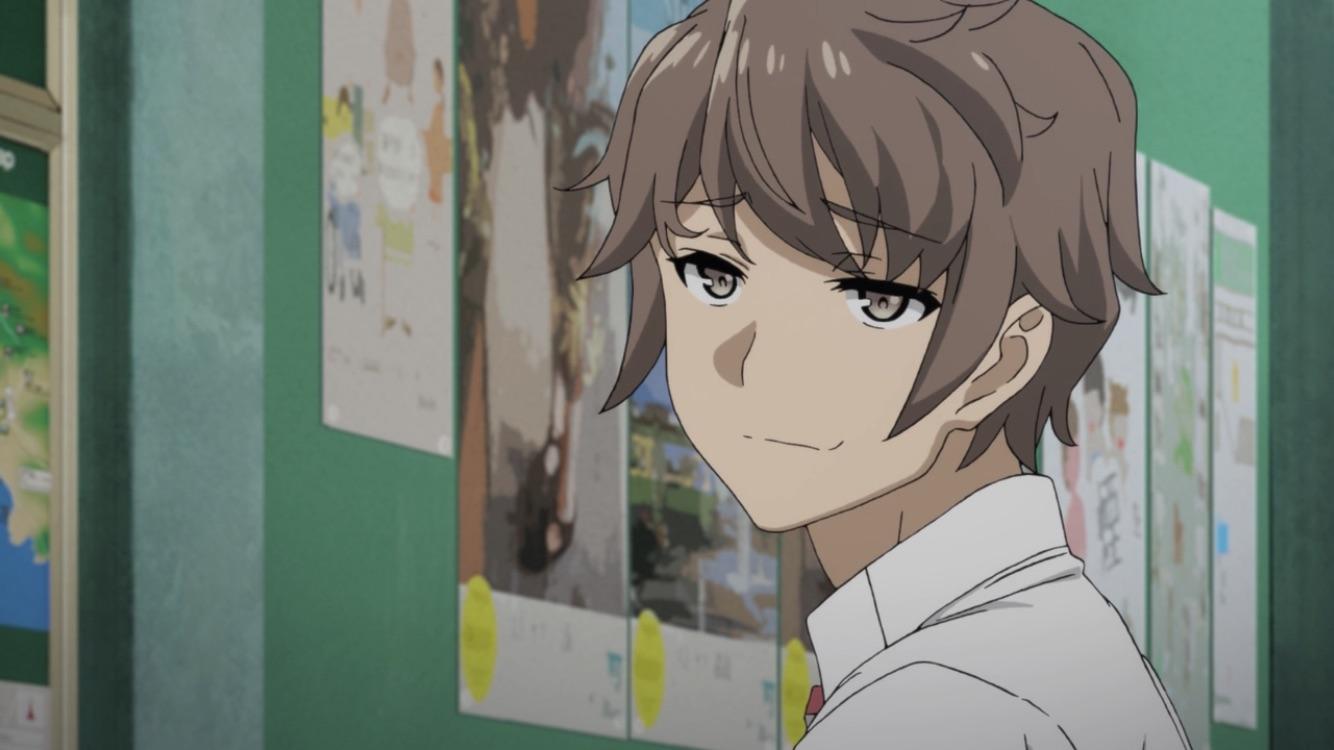
Sakuta Azusagawa: The protagonist of the series, Sakuta is a cynical yet compassionate high school student with a dry sense of humor. He is known for his blunt honesty and willingness to confront societal norms and injustices. Sakuta’s empathy and understanding make him a confidant for the girls affected by adolescent syndrome, leading him to form deep emotional bonds with them.
Mai Sakurajima: The female lead, Mai is a former child actress who temporarily retires from the entertainment industry due to her puberty syndrome, which causes her to become invisible to others. To combat this phenomenon, Mai wears a bunny girl costume in public, leading to her nickname “Bunny Girl Senpai.” Despite her initial standoffish demeanor, Mai is kind-hearted and fiercely protective of her loved ones, particularly Sakuta.
Kaede Azusagawa: Sakuta’s younger sister, Kaede, is a sweet and caring girl who experiences memory loss and personality changes as a result of her own adolescence syndrome. Kaede’s arc explores themes of identity and the impact of trauma on mental health, as she strives to reclaim her lost memories and rediscover herself with Sakuta’s support.
Tomoe Koga: A classmate of Sakuta and Mai, Tomoe is a spirited and energetic girl with a crush on Sakuta. Her arc goes into themes of unrequited love, jealousy, and self-acceptance as she navigates her feelings for Sakuta and her own insecurities.

Rio Futaba: A former acquaintance of Sakuta, Rio is a brilliant and enigmatic girl with an interest in quantum mechanics and psychology. Her arc explores themes of self-worth and the pressure to conform to societal expectations, as she struggles with her own identity and sense of belonging.
Nodoka Toyohama: Nodoka is Mai’s younger half-sister, known for her striking resemblance to Mai. Her arc examines themes of sibling rivalry, identity, and the desire for validation and recognition, as she grapples with her complex relationship with Mai.
“Rascal Does Not Dream of Bunny Girl Senpai” explores the challenges and pressures faced by adolescents as they navigate the transition from childhood to adulthood. The series addresses issues such as social isolation, identity formation, peer pressure, and the impact of trauma on mental health, presenting them in a compelling and empathetic manner.
The series intricately weaves romance into its narrative, exploring the complexities of love, friendship, and emotional intimacy. The relationships between Sakuta and the various girls affected by adolescent syndrome are multifaceted and nuanced, with each arc delving into the characters’ emotional struggles and personal growth.
Bunny Girl Senpai offers insightful social commentary on contemporary issues such as societal norms, celebrity culture, and the pressure to conform. The series critiques the superficiality of fame and the dehumanizing effects of media scrutiny, while also celebrating the importance of genuine connections and individuality.

The series incorporates elements of philosophy and psychology, particularly in its exploration of quantum mechanics and the nature of reality. Themes of perception, consciousness, and the interconnectedness of human experiences add depth and complexity to the narrative, inviting viewers to ponder the mysteries of existence and the human condition.
The anime adaptation of “Rascal Does Not Dream of Bunny Girl Senpai” features high-quality animation and expressive character designs that bring the story to life. The artwork effectively conveys the emotional depth of the characters and the surreal nature of the supernatural phenomena they encounter.
The use of color and lighting enhances the mood and atmosphere of each scene, from the tranquil beauty of the natural surfaces to the eerie ambiance of the supernatural occurrences.
The music in “Bunny Girl Senpai” complements the series’ emotional depth and narrative progression. The opening theme, “Kimi no Sei” by the Peggies, captures the bittersweet tone of the series with its melodic vocals and heartfelt lyrics. The ending theme, “Fukashigi no Carte” by Asami Seto, offers a contemplative and introspective conclusion to each episode, leaving a lasting impression on viewers.

“Rascal Does Not Dream of Bunny Girl Senpai” has received widespread critical acclaim for its compelling storyline, well-developed characters, and thought-provoking themes. The series has been praised for its mature and nuanced portrayal of adolescent struggles and its ability to blend romance, comedy, and supernatural elements seamlessly.
The anime adaptation has gained a dedicated fanbase and has been celebrated as one of the standout series of its genre. Its memorable characters, engaging storyline, and emotional resonance have solidified its status as a modern classic in the anime community.
“Rascal Does Not Dream of Bunny Girl Senpai” is a nice and thought-provoking series that offers a poignant exploration of adolescence, romance, and the human condition. Through its compelling characters, engaging storyline, and thought-provoking themes, the series invites viewers on a journey of self-discovery, empathy, and personal growth.
Whether experienced through the light novels or the anime adaptation, “Bunny Girl Senpai” continues to excite audiences with its timeless appeal and enduring message of hope, love, and the power of genuine connections.
4. Kokoro Connect
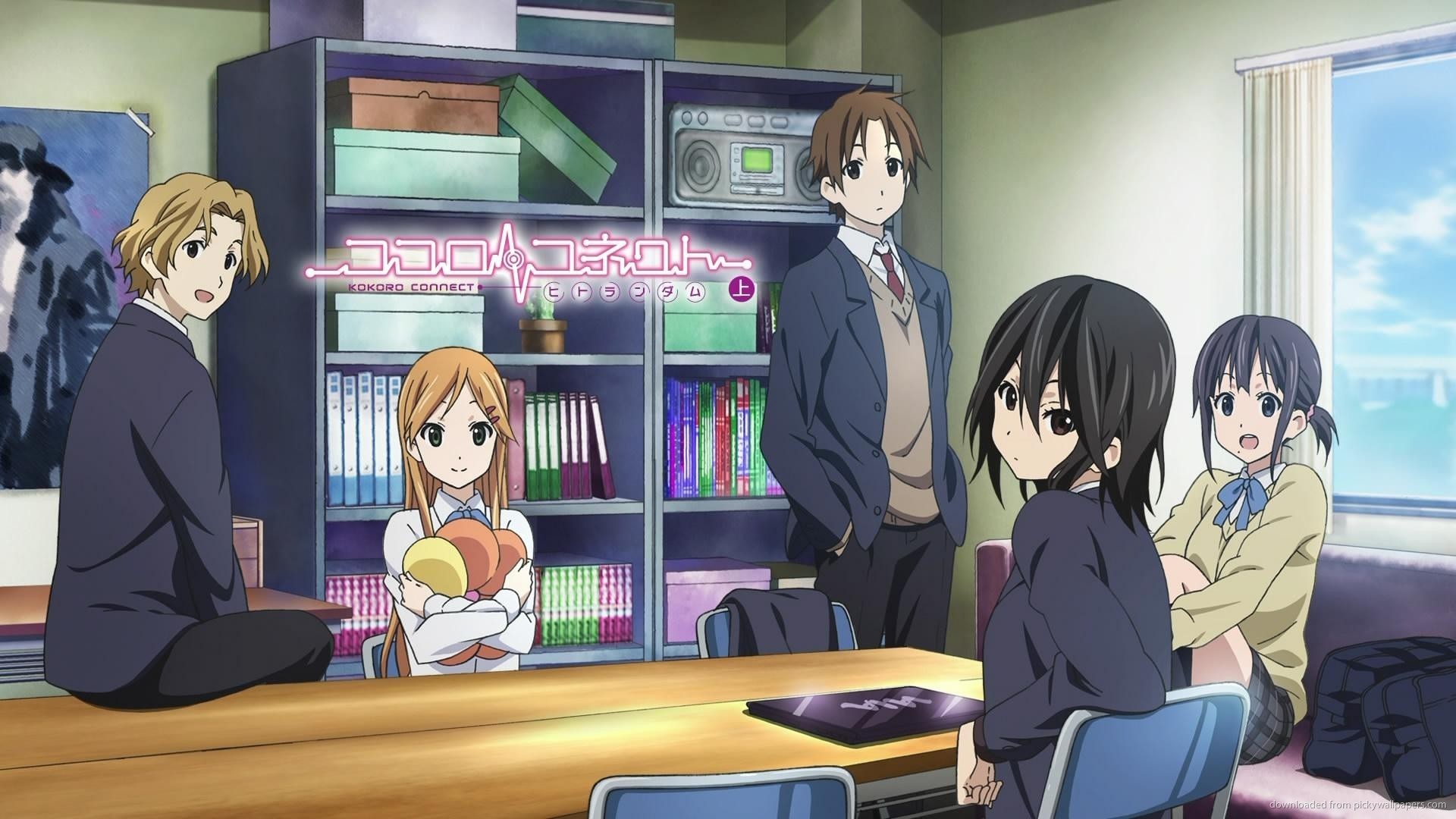
Kokoro Connect injects a supernatural twist into the classic love triangle trope, offering a compelling exploration of relationships and personal growth. The story centers on students Taichi, Iori, Yui, Yoshifumi, and Himeko, members of their school’s Student Cultural Research Club. Their lives take an unexpected turn when they are bestowed with supernatural abilities by a mysterious entity named Heartseed.
As they grapple with these newfound powers, which cause them to experience various sensory phenomena, their relationships are put to the test. Secrets are revealed, emotions run high, and hidden aspects of their personalities come to light. The anime delivers strong character development, ensuring an engaging and thought-provoking viewing experience from start to finish.
“Kokoro Connect” is a Japanese light novel series written by Sadanatsu Anda, with illustrations by Shiromizakana. The series was serialized online from January 2010 to March 2013 and later compiled into 11 volumes. It has since been adapted into various media formats, including a manga series, a drama CD, and an anime television series.
The story of “Kokoro Connect” revolves around five high school students—Taichi Yaegashi, Iori Nagase, Himeko Inaba, Yoshifumi Aoki, and Yui Kiriyama—who are members of their school’s Cultural Research Club. One day, they suddenly find themselves experiencing strange and inexplicable phenomena, including body-swapping and the manifestation of their innermost thoughts and desires.
These phenomena are caused by an enigmatic being known as “Heartseed,” who forces the students to confront their innermost fears, insecurities, and desires. As they grapple with the challenges posed by these supernatural occurrences, the students form deep bonds with each other and learn valuable lessons about empathy, acceptance, and the complexity of human emotions.
Taichi Yaegashi: The male protagonist of the series, Taichi is a kind-hearted and selfless student who serves as the de facto leader of the Cultural Research Club. He is deeply devoted to his friends and often puts their needs before his own. Taichi’s arc explores themes of self-sacrifice, identity, and the desire to protect those he cares about.
Iori Nagase: Iori is a cheerful and outgoing girl who hides her true feelings behind a façade of friendliness and positivity. She harbors a complex relationship with her mother and struggles with feelings of loneliness and self-doubt. Iori’s arc goes into themes of authenticity, self-acceptance, and the search for identity.
Himeko Inaba: Himeko is the vice president of the Cultural Research Club and a highly intelligent and analytical student. She is known for her cool and composed demeanor but struggles with her own insecurities and fears. Himeko’s arc explores themes of vulnerability, trust, and the difficulty of opening up to others.
Yoshifumi Aoki: Aoki is a laid-back and easygoing student who often serves as the comic relief of the group. He harbors feelings for Yui Kiriyama but struggles to express them openly. Aoki’s arc explores themes of unrequited love, friendship, and the fear of rejection.

Yui Kiriyama: Yui is a reserved and timid girl who has a passion for martial arts. She struggles with feelings of guilt and self-blame due to past trauma, which affects her ability to trust others. Yui’s arc goes into themes of trauma, healing, and the importance of self-forgiveness.
Kokoro Connect explores the complexities of identity and self-discovery, as the characters grapple with their innermost thoughts, desires, and insecurities. The series highlights the importance of authenticity and self-acceptance in forming meaningful connections with others.
The supernatural phenomena experienced by the characters force them to empathize with each other’s struggles and perspectives, fostering deeper bonds of friendship and understanding. Through their shared experiences, they learn to appreciate the complexity of human emotions and the importance of compassion and empathy.
The series emphasizes the importance of communication and trust in maintaining healthy relationships. The characters must learn to communicate openly and honestly with each other, overcoming misunderstandings and conflicts to build trust and mutual respect.
“Kokoro Connect” addresses themes of acceptance and forgiveness, as the characters confront their past mistakes, regrets, and traumas. The series explores the healing power of forgiveness and the ability to move forward with compassion and understanding.
The anime adaptation of “Kokoro Connect” features vibrant visuals, expressive character designs, and fluid animation that bring the story to life. The artwork effectively conveys the emotional depth of the characters and the surreal nature of the supernatural phenomena they experience.
The use of color and lighting enhances the mood and atmosphere of each scene, from the tranquil beauty of everyday life to the eerie ambience of the supernatural occurrences.
The music in “Kokoro Connect” complements the series’ emotional depth and narrative progression. The opening theme, “Paradigm” by eufonius, captures the introspective and contemplative tone of the series with its melodic vocals and poignant lyrics. The ending theme, “Kimi Rhythm” by Masaki Imai, offers a soothing and reflective conclusion to each episode, leaving a lasting impression on viewers.
“Kokoro Connect” has received widespread critical acclaim for its compelling storyline, well-developed characters, and thought-provoking themes. The series has been praised for its mature and nuanced portrayal of adolescence and relationships, as well as its ability to blend supernatural elements with psychological drama seamlessly.
The anime adaptation has gained a dedicated fanbase and has been celebrated as one of the standout series of its genre. Its memorable characters, engaging storyline, and emotional resonance have solidified its status as a modern classic in the anime community.
“Kokoro Connect” is a nice and emotionally resonant series that offers a poignant exploration of adolescence, friendship, and the complexity of human emotions. Through its compelling characters, engaging storyline, and thought-provoking themes, the series invites viewers on a journey of self-discovery, empathy, and personal growth.
Whether experienced through the light novels or the anime adaptation, “Kokoro Connect” continues to excite audiences with its timeless appeal and enduring message of hope, love, and the power of genuine connections.
3. My Dress-Up Darling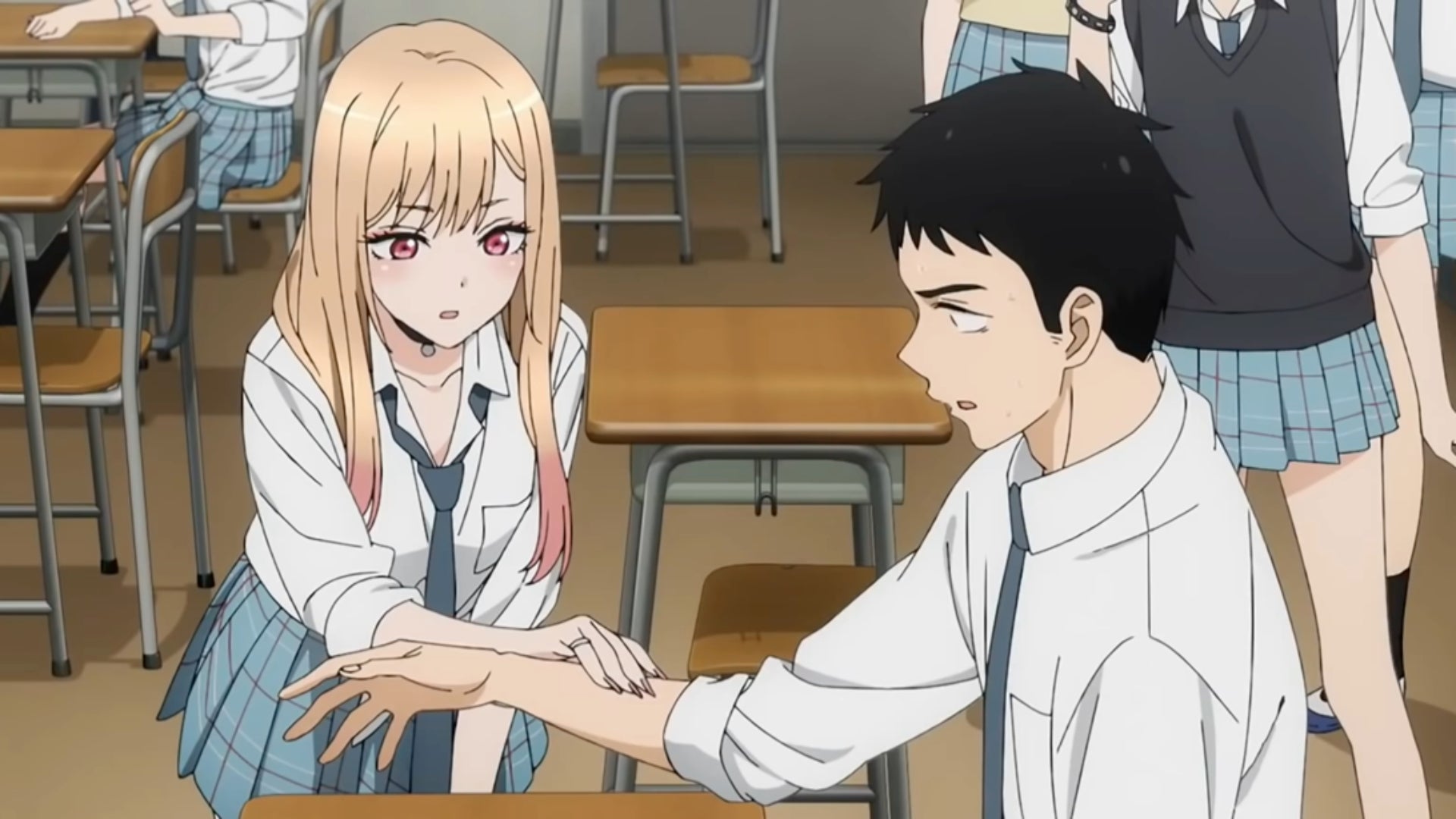
Gojou and Marin Kitagawa couldn’t be more different. Gojou is reserved and isolated, with no friends, keeping himself apart from others due to fear of ridicule for his interest in hina dolls. On the other hand, Kitagawa is popular, outgoing, and confident.
Despite their contrasting worlds, Kitagawa becomes intrigued by cosplay and discovers that Gojou might be the ideal person to create outfits for her. My Dress-Up Darling is a heartwarming, humorous, and exquisitely animated romance anime that excels in executing the genre’s tropes with finesse. Despite its relatively conventional approach, the series fascinates viewers with its endearing characters and engaging storyline
“My Dress-Up Darling” (Japanese: “Sono Bisque Doll wa Koi wo Suru”) is a Japanese manga series written and illustrated by Shinichi Fukuda.
The manga began serialization in Square Enix’s Young Gangan magazine in January 2018 and has gained considerable popularity for its unique blend of romance, comedy, and the intricacies of cosplay culture. In 2022, the series was adapted into an anime by CloverWorks, further boosting its recognition and acclaim.
The story revolves around Wakana Gojo, a high school student who is passionate about crafting traditional Japanese hina dolls. Due to a childhood incident where his love for dolls was ridiculed, Wakana has become introverted and isolated, spending most of his time honing his skills in his grandfather’s doll-making shop.
Wakana’s life takes a dramatic turn when he meets Marin Kitagawa, a popular and outgoing classmate who is deeply into cosplay. Unlike Wakana, Marin is confident and unafraid to express her interests, no matter how unconventional they may be.
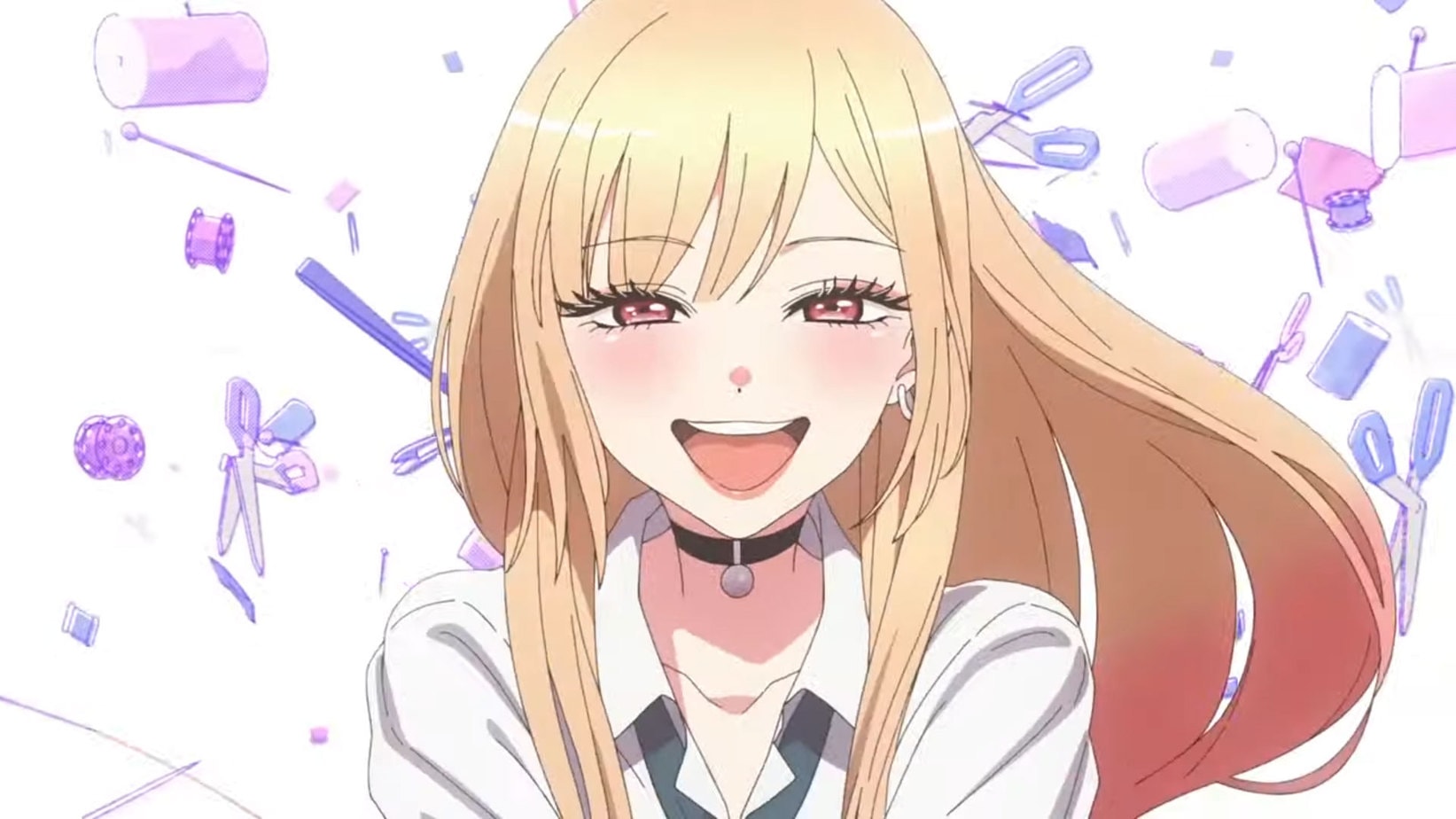
When Marin discovers Wakana’s sewing abilities, she asks him to help her create cosplay outfits for her favorite characters. Despite his initial reluctance and lack of experience in making clothes for people, Wakana agrees, leading to an unexpected and transformative partnership.
As they work together on various cosplay projects, Wakana and Marin develop a close friendship that gradually blossoms into something deeper. The series explores their growing relationship, their individual passions, and the impact they have on each other’s lives.
Wakana Gojo: The male protagonist, Wakana is a talented and dedicated hina doll craftsman. He is shy and reserved, largely due to the teasing he faced as a child for his unconventional hobby. Wakana’s character arc focuses on his journey of self-acceptance and his gradual emergence from his shell, inspired by Marin’s confidence and encouragement.
Marin Kitagawa: The female protagonist, Marin is a lively and charismatic high school student with a passion for anime, manga, and cosplay. She is unapologetically herself, and her enthusiasm for her hobbies is infectious. Marin’s character is a refreshing portrayal of a confident and supportive friend and romantic interest who helps Wakana embrace his talents and passions.
Kaoru Gojo: Wakana’s grandfather and mentor, Kaoru is a master hina doll craftsman who runs the family shop. He is supportive of Wakana’s interests and serves as a guiding figure in his life.
Sajuna Inui: A well-known cosplayer who eventually becomes friends with Wakana and Marin. Sajuna’s character introduces additional perspectives on the world of cosplay and the challenges and joys that come with it.
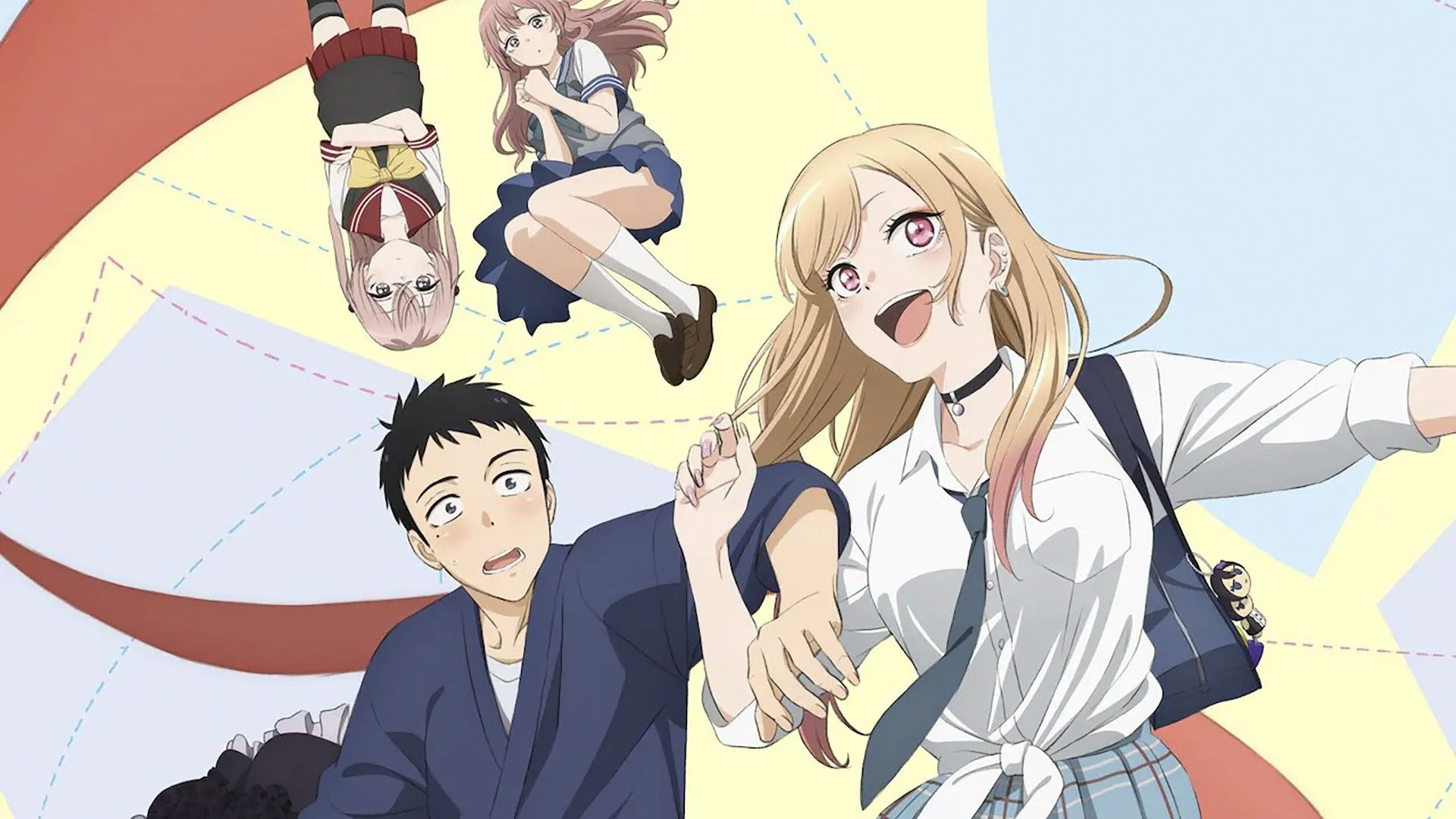
Shinju Inui: Sajuna’s younger sister, who is also interested in cosplay helps her sister with her projects. Shinju’s character adds another layer to the exploration of cosplay culture in the series.
One of the central themes of “My Dress-Up Darling” is cosplay culture. The series provides an in-depth look at the art and effort involved in creating cosplay outfits, from sewing and fabric selection to makeup and posing. It celebrates the creativity and passion of cosplayers and highlights the community and camaraderie that cosplay can foster.
Both Wakana and Marin experience significant personal growth throughout the series. Wakana learns to embrace his love for doll-making and gains confidence in his abilities, while Marin discovers new depths to her passion for cosplay and develops a deeper understanding of herself and her relationships.
The evolving relationship between Wakana and Marin is at the heart of the story. Their dynamic is characterized by mutual support, respect, and admiration, and the series beautifully captures the nuances of their growing friendship and budding romance. The chemistry between the characters is natural and engaging, making their interactions a joy to watch.
My Dress-Up Darling challenges traditional gender roles and stereotypes. Wakana’s interest in hina dolls and sewing contrasts with societal expectations, while Marin’s confident and assertive personality defies typical portrayals of female characters in romance series. The series promotes the idea that passion and talent should be celebrated, regardless of societal norms.
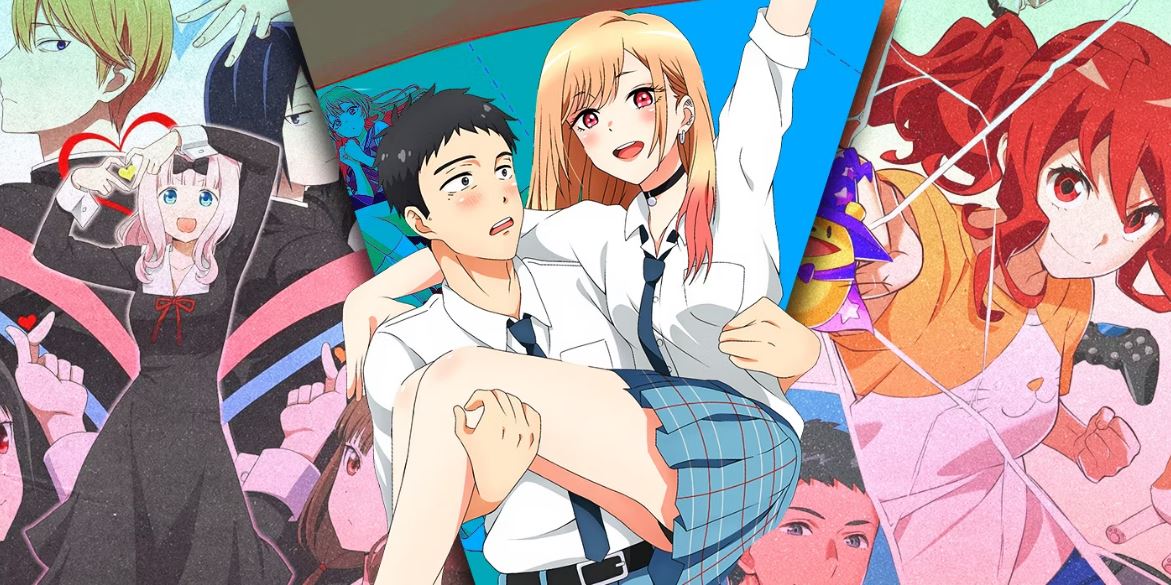
The anime adaptation by CloverWorks is notable for its high-quality animation and vibrant art style. The character designs are faithful to the manga, capturing the unique personalities and expressions of the characters.
The animation particularly shines in scenes involving cosplay, where the detailed costumes and makeup are brought to life with meticulous attention to detail. The use of color and lighting enhances the visual appeal, creating a visually stunning and immersive experience.
The music in “My Dress-Up Darling” complements the series’ tone and atmosphere. The opening theme, “Sansan Days” by Spira Spica, is upbeat and catchy, setting a lively and energetic mood for the series. The ending theme, “Koi no Yukue” by Akari Akase, is sweet and reflective, providing a fitting conclusion to each episode.
The background score effectively underscores the emotional moments and the excitement of the cosplay scenes, enhancing the viewing experience.
“My Dress-Up Darling” has received widespread acclaim for its unique premise, well-developed characters, and heartfelt storytelling. The series has been praised for its positive portrayal of cosplay culture and its exploration of themes such as self-acceptance and breaking stereotypes. Both the manga and the anime have garnered a dedicated fanbase, with viewers appreciating the refreshing and wholesome dynamic between the protagonists.
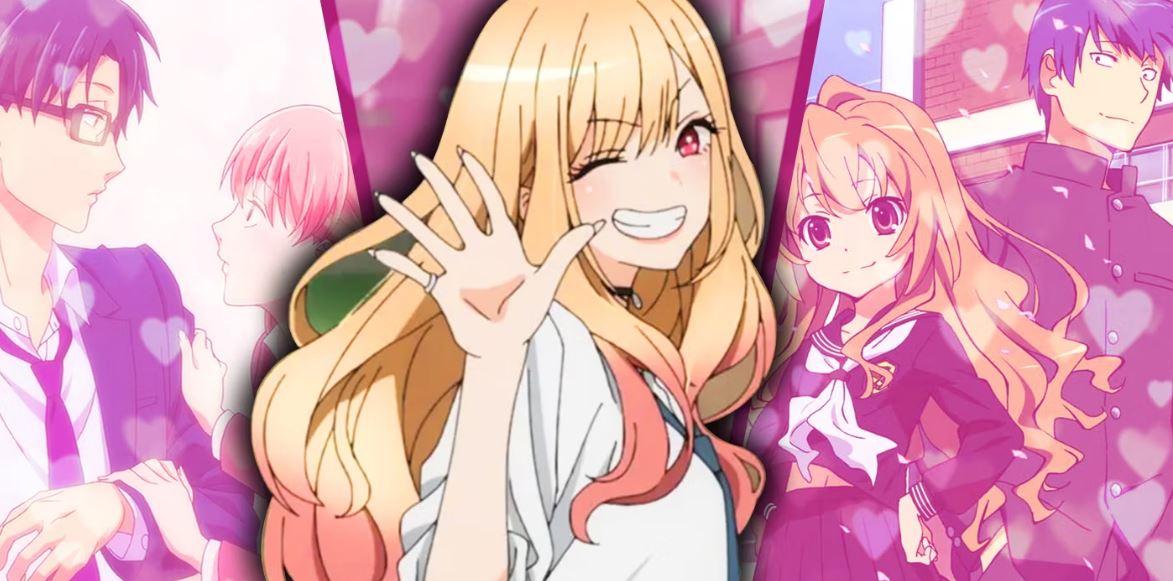
The anime adaptation, in particular, has been lauded for its high production quality, engaging character interactions, and faithful adaptation of the source material. It has introduced the series to a broader audience, further solidifying its popularity and impact.
“My Dress-Up Darling” is a delightful and heartwarming series that offers a fresh take on the romance and slice-of-life genres. Through its engaging characters, compelling storyline, and celebration of cosplay culture, the series delivers a message of self-acceptance, personal growth, and the importance of pursuing one’s passions.
Whether experienced through the manga or the anime adaptation, “My Dress-Up Darling” continues to excite audiences with its charm, humor, and emotional depth, making it a must-watch for fans of heartfelt and uplifting stories.
2. Maison Ikkoku

Rumiko Takahashi is undeniably one of the greatest mangaka of all time, renowned for timeless classics like Inuyasha, Ranma 1/2, and Urusei Yatsura. While Takahashi’s work primarily falls within the shonen genre, she has also ventured into the realm of seinen with Maison Ikkoku, a series that stands out for its mature take on romance.
Unlike her shonen properties, which often blend romance with comedy or action, Maison Ikkoku places romance front and center, enriched with drama, character development, and humor. The central relationship between Kyouko and Yuusaku is beautifully depicted, with both characters harboring feelings for each other while grappling with personal circumstances that hold them back.
Kyouko, having recently lost her husband, is hesitant to move on, while Yuusaku struggles with feelings of unworthiness as a student. Their journey toward understanding and love forms the heart of the anime, accompanied by a rich cast of supporting characters who add depth to the story.
“Maison Ikkoku” is a classic romantic comedy manga series written and illustrated by Rumiko Takahashi. Serialized from 1980 to 1987 in the manga magazine Big Comic Spirits, it was later collected into 15 tankobon volumes.
The series gained immense popularity and critical acclaim, cementing its place as one of Takahashi’s most beloved works. “Maison Ikkoku” was adapted into an anime television series, multiple OVAs (original video animations), a live-action film, and a live-action TV drama.
Set in the late 1980s, “Maison Ikkoku” follows the story of Yusaku Godai, a perpetually unlucky college student who moves into the dilapidated Maison Ikkoku boarding house. There, he becomes infatuated with Kyoko Otonashi, the young and beautiful widowed manager of the boarding house.
Despite his feelings for Kyoko, Godai struggles to express them due to his insecurities and the interference of the eccentric tenants living in Maison Ikkoku.
The series primarily revolves around the comedic and romantic misadventures of Godai and Kyoko, as well as the colorful cast of characters inhabiting Maison Ikkoku. From nosy neighbors to well-meaning friends, each character adds depth and humor to the story as they navigate love, friendship, and the trials of everyday life.
Yusaku Godai: The male protagonist of the series, Godai is a kind-hearted but hapless college student who harbors feelings for Kyoko. He is often portrayed as clumsy and indecisive, but his genuine sincerity and determination endear him to both Kyoko and the readers.
Kyoko Otonashi: The female protagonist, Kyoko is the young widow who manages Maison Ikkoku. Despite her beauty and grace, Kyoko struggles with her past and her feelings for her deceased husband. Her relationship with Godai forms the central romantic arc of the series.
Ichinose: A lively and flirtatious tenant of Maison Ikkoku, Ichinose is one of Godai’s close friends. Her outgoing personality and penchant for mischief often lead to humorous situations in the boarding house.
Akemi Roppongi: A bartender and another tenant of Maison Ikkoku, Akemi is known for her love of alcohol and her blunt, straightforward manner. Despite her rough exterior, she cares deeply for her friends and often dispenses advice to Godai and Kyoko.
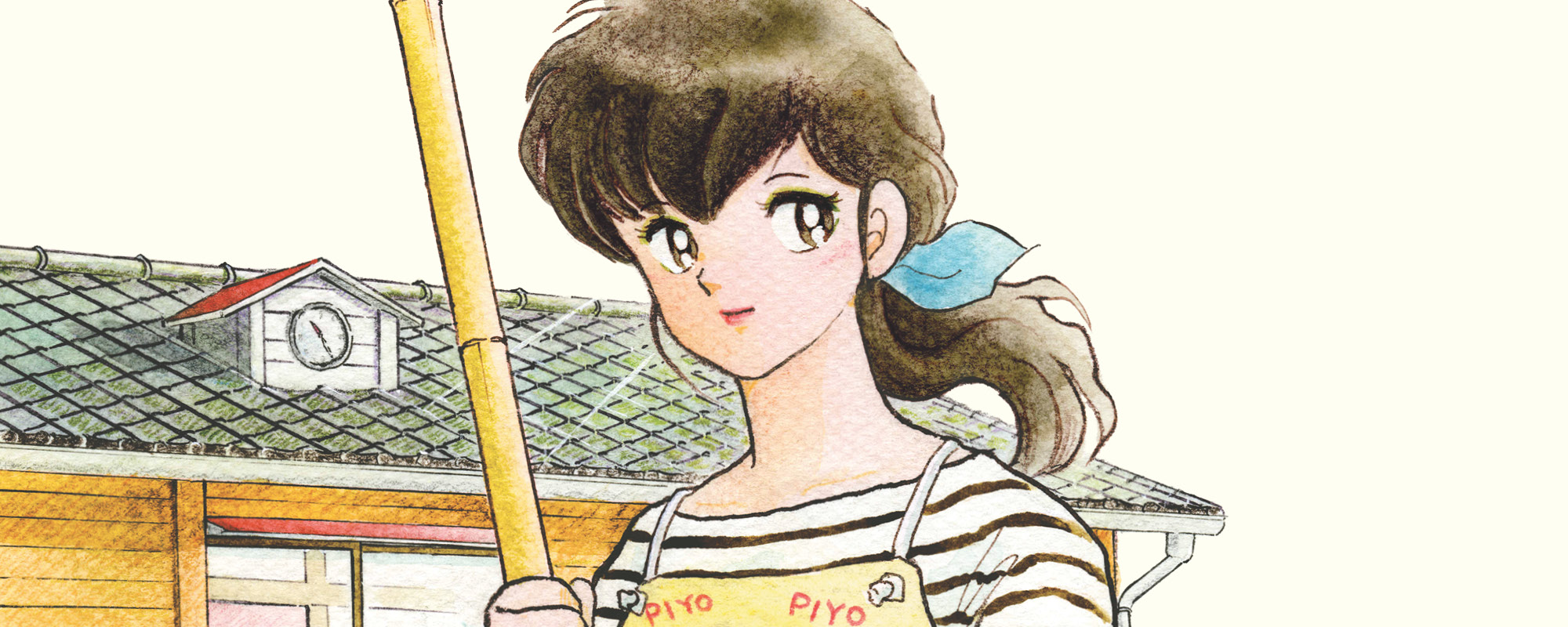
Hanae Ichinose: The strict and conservative landlady of Maison Ikkoku, Mrs. Ichinose is Ichinose’s mother and provides comedic relief with her overbearing personality and traditional values.
At its core, “Maison Ikkoku” is a romantic comedy that masterfully blends humor and heartfelt moments. The series explores the ups and downs of romance, from awkward misunderstandings to tender gestures of love, while infusing each chapter with Takahashi’s signature wit and charm.
Throughout the series, the characters of “Maison Ikkoku” undergo significant growth and development. Godai matures from a bumbling student to a more confident and responsible young man, while Kyoko learns to confront her past and open her heart to love once again.
Maison Ikkoku is not just a boarding house; it’s a close-knit community where tenants support each other through life’s challenges. The series celebrates the bonds of friendship and the importance of finding a sense of belonging amidst life’s uncertainties.
Set against the backdrop of 1980s Japan, “Maison Ikkoku” also reflects the social and cultural changes of the era. From fashion trends to technological advancements, the series captures the essence of a rapidly evolving society while maintaining its timeless appeal.
Rumiko Takahashi’s artwork in “Maison Ikkoku” is characterized by its expressive characters, detailed backgrounds, and dynamic panel layouts. Her clean lines and distinctive character designs bring the world of Maison Ikkoku to life, while her comedic timing and visual gags enhance the humor of the series.
The anime adaptation of “Maison Ikkoku” features a memorable soundtrack that complements the series’ romantic and comedic moments. The opening theme, “Kanashimi yo Konnichiwa” by Yuki Saito, sets the nostalgic and bittersweet tone of the series, while the ending theme, “Ashita Hareru ka” by Takao Kisugi, offers a hopeful and uplifting conclusion to each episode.
“Maison Ikkoku” is widely regarded as one of Rumiko Takahashi’s finest works and a classic of the romantic comedy genre. The manga and anime adaptations have received critical acclaim for their engaging storylines, well-developed characters, and enduring appeal. The series has inspired multiple spin-offs, parodies, and cultural references, cementing its status as a beloved classic in Japanese popular culture.
“Maison Ikkoku” is a timeless and heartwarming series that grab audiences with its endearing characters, romantic plotlines, and comedic hijinks. Rumiko Takahashi’s masterful storytelling and distinctive art style make it a must-read manga and a must-watch anime for fans of romance and comedy alike. Whether experienced through the original manga or the animated adaptation, “Maison Ikkoku”
1. Romantic Killer
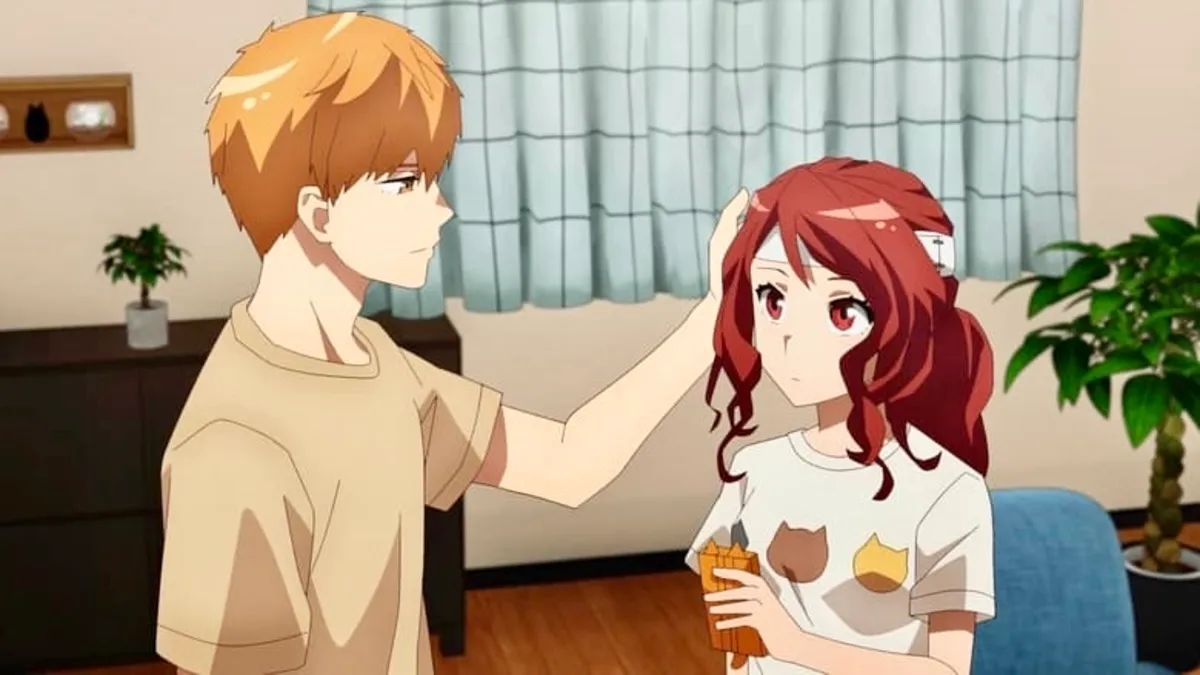
Romantic Killer cleverly parodies the tropes of romance and harem anime while still appreciating their strengths. The story follows Anzu, a girl who is uninterested in romance and prefers spending her time playing games and indulging in chocolate.
However, her life takes a surreal turn when a magical being forces her into the role of a reverse harem lead, disrupting her comfortable routine and thrusting her into unexpected romantic situations with boys she barely knows.
At its core, Romantic Killer is a comedy, with each scene designed to elicit laughter from the audience. The humor, reminiscent of its shonen manga roots, often relies on exaggerated facial expressions and situational comedy.
Despite its comedic tone, the anime treats its characters and their relationships seriously. Anzu is a compelling protagonist, and the male characters vying for her affection are well-developed. Romantic Killer offers a delightful blend of humor and romance, making it a must-watch for fans who enjoy both genres.
“Romantic Killer” is a Japanese manga series written and illustrated by Tomoko Yamashita. Serialized in Big Comic Spirits magazine since 2019, the series has gained attention for its unique blend of romance, suspense, and psychological thriller elements. As of my last update, the series continues to grab readers with its gripping storyline and complex characters.
“Romantic Killer” follows the story of Renji Higashiyama, a seemingly ordinary salaryman who leads a double life as a contract killer. Renji’s mundane existence takes a drastic turn when he meets Mizuki, a mysterious and alluring woman who shares his dark secret. As their paths intertwine, Renji finds himself drawn to Mizuki, despite the dangers that come with her enigmatic presence.
Set against the backdrop of a bustling metropolis, the series explores the complexities of love, morality, and the human psyche. As Renji navigates the dangerous world of contract killing, he must confront his own inner demons and grapple with the consequences of his actions, all while struggling to protect the woman he loves.
Renji Higashiyama: The male protagonist of the series, Renji is a skilled and methodical contract killer with a troubled past. Despite his profession, he possesses a strong sense of morality and wrestles with guilt over his actions. Renji’s character arc revolves around his internal conflict as he seeks redemption and finds solace in his relationship with Mizuki.
Mizuki: The female lead, Mizuki is a mysterious woman with a tragic past and a hidden agenda. Her allure and complexity excite Renji, drawing him into her dangerous world. Mizuki’s character is shrouded in secrecy, and her true motivations remain a central mystery of the series.
Takashi Morita: Renji’s childhood friend and a fellow contract killer, Morita serves as both a mentor and a rival to Renji. His cold and calculating demeanor contrasts with Renji’s more introspective nature, leading to tension and conflict between the two characters.
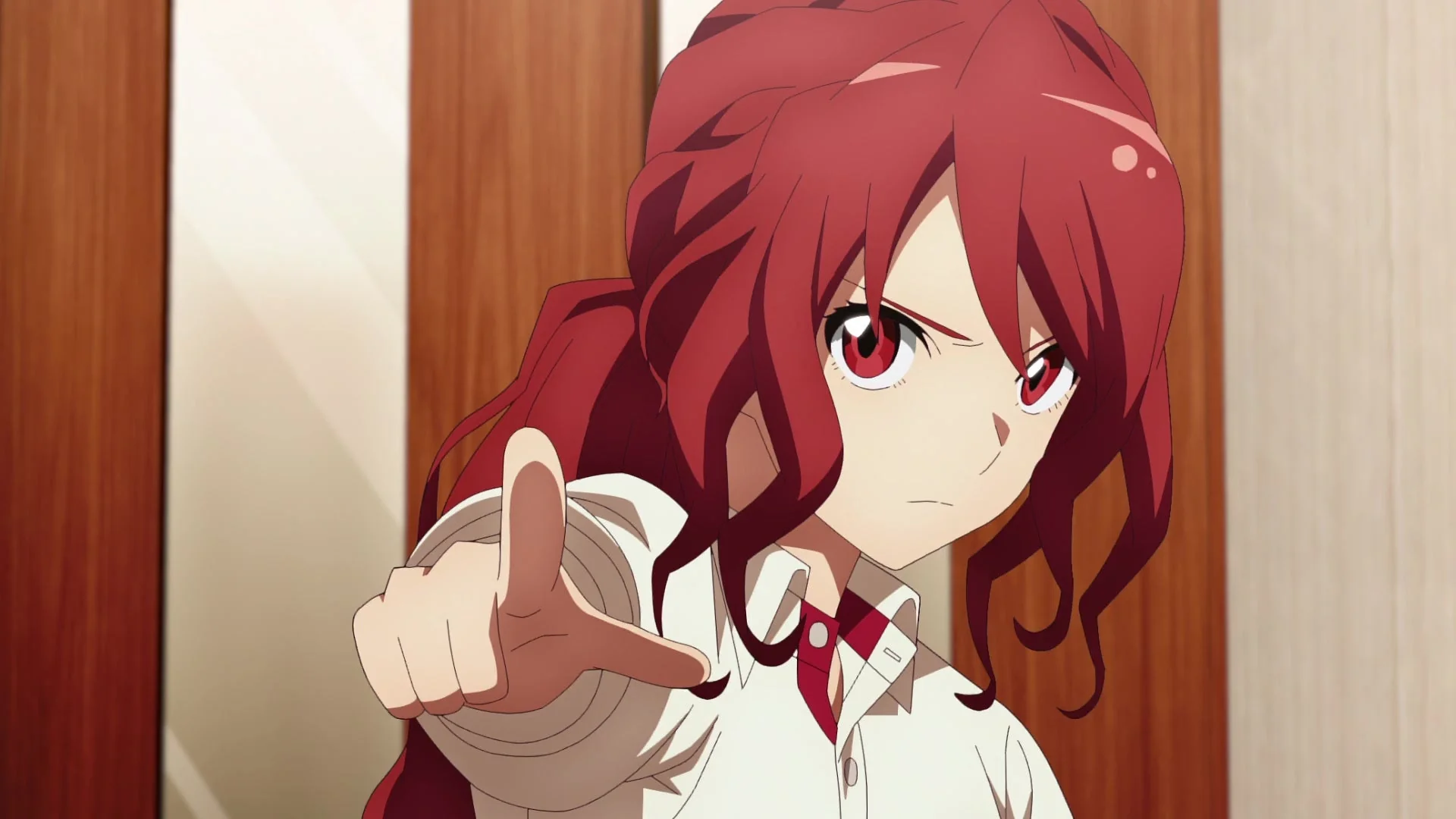
Yuki: A young woman who becomes entangled in Renji and Mizuki’s lives, Yuki serves as a catalyst for the unfolding events of the series. Her innocence and vulnerability provide a stark contrast to the darkness that surrounds Renji and Mizuki, highlighting the moral ambiguity of their actions.
At its core, “Romantic Killer” explores themes of love and redemption amidst a backdrop of violence and moral ambiguity. The series goes into the complexities of human relationships and the capacity for change, as Renji and Mizuki confront their pasts and strive for a chance at happiness.
The series raises questions about morality and the nature of justice as Renji grapples with the consequences of his actions. Through his experiences as a contract killer, Renji confronts the moral gray areas of his profession and struggles to reconcile his past with his desire for a better future.
Romantic Killer also goes into themes of identity and self-discovery as the characters confront their inner demons and search for meaning in their lives. Renji’s journey towards self-acceptance and Mizuki’s quest for redemption serve as central arcs of the series, driving the narrative forward with emotional depth and intensity.
With its intricate plot twists and suspenseful storytelling, “Romantic Killer” keeps readers on the edge of their seats with each new chapter. The series masterfully combines elements of romance and thriller, creating a gripping narrative that leaves readers eagerly anticipating the next revelation.
Tomoko Yamashita’s artwork in “Romantic Killer” is characterized by its detailed character designs, expressive facial expressions, and atmospheric backgrounds. The artist effectively conveys the tension and emotion of each scene, heightening the drama and intensity of the storyline. The use of light and shadow adds to the noir aesthetic of the series, enhancing its visual impact.
“Romantic Killer” has garnered praise from readers and critics alike for its compelling storyline, well-developed characters, and atmospheric artwork. The series has grabbed audiences with its suspenseful plot twists, complex character dynamics, and thought-provoking themes.
As one of the standout manga series in the romance thriller genre, “Romantic Killer” continues to attract a dedicated fanbase and remains a must-read for fans of suspenseful storytelling.
“Romantic Killer” is a gripping and suspenseful manga series that combines elements of romance, thriller, and psychological drama to create a nice narrative.
With its compelling characters, intricate plot twists, and atmospheric artwork, the series delivers a thrilling reading experience that keeps readers eagerly turning the pages. Whether you’re a fan of romance, suspense, or psychological thrillers, “Romantic Killer” offers something for everyone and is sure to leave a lasting impression.
Memes of the Day
Pixiv 118913642
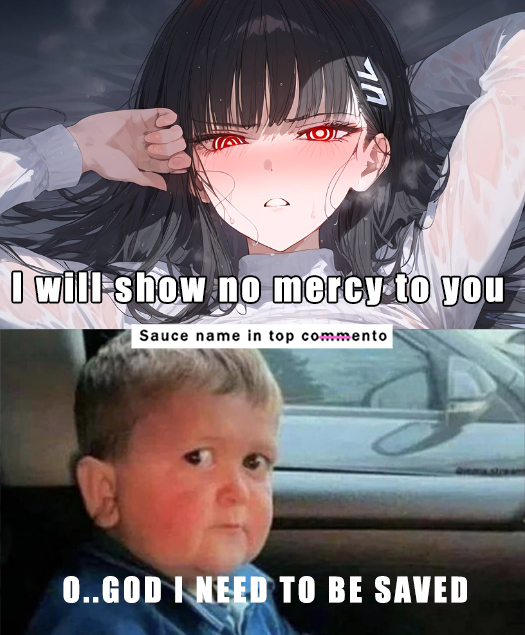
Rennyu Order The Animation

Araiya-san! Ore to Aitsu ga Onn

Its a three pages short manga on pixiv to watch search – Pixiv 118253037#1

When I Confessed to My Mother, She Let Me Do XXXX
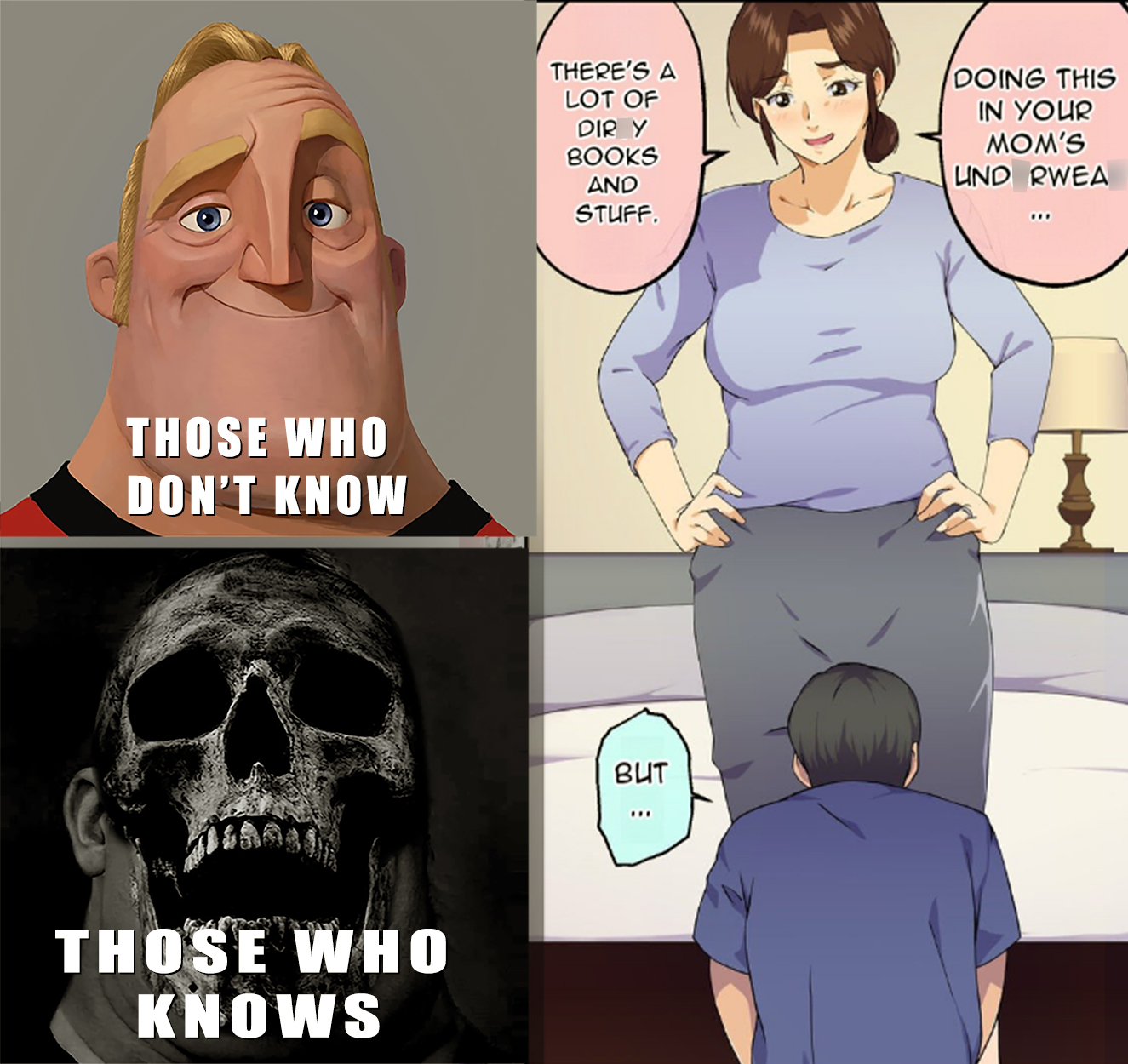
ddg3420 Cloud Retainer Gelbooru
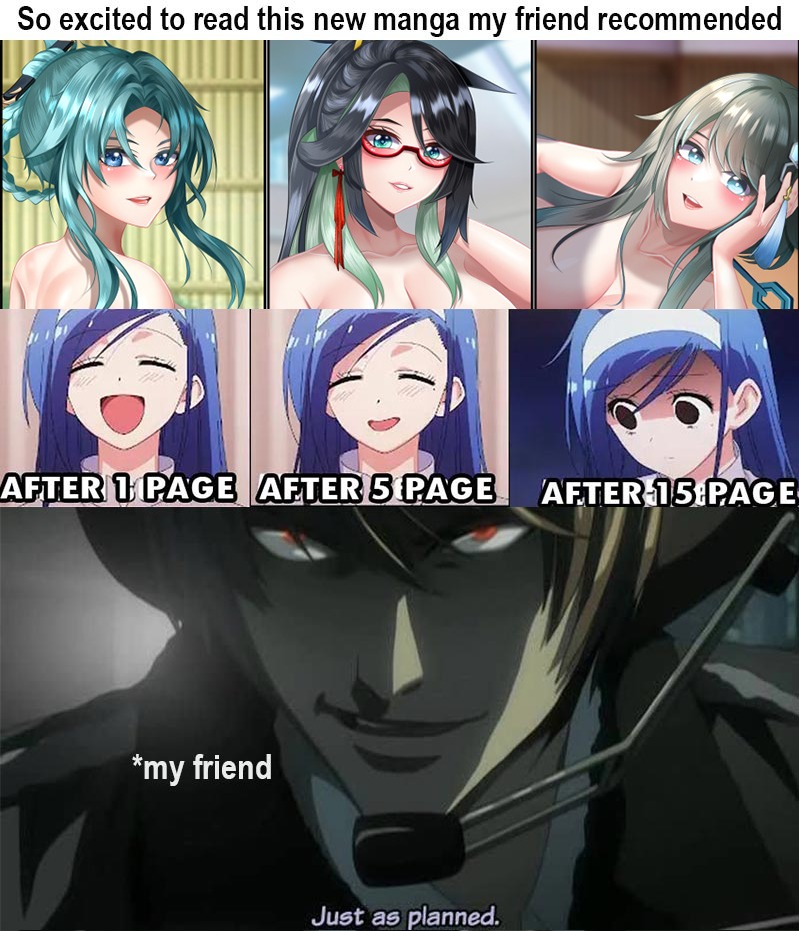
Its a pixiv art for full image search – Pixiv 114215858
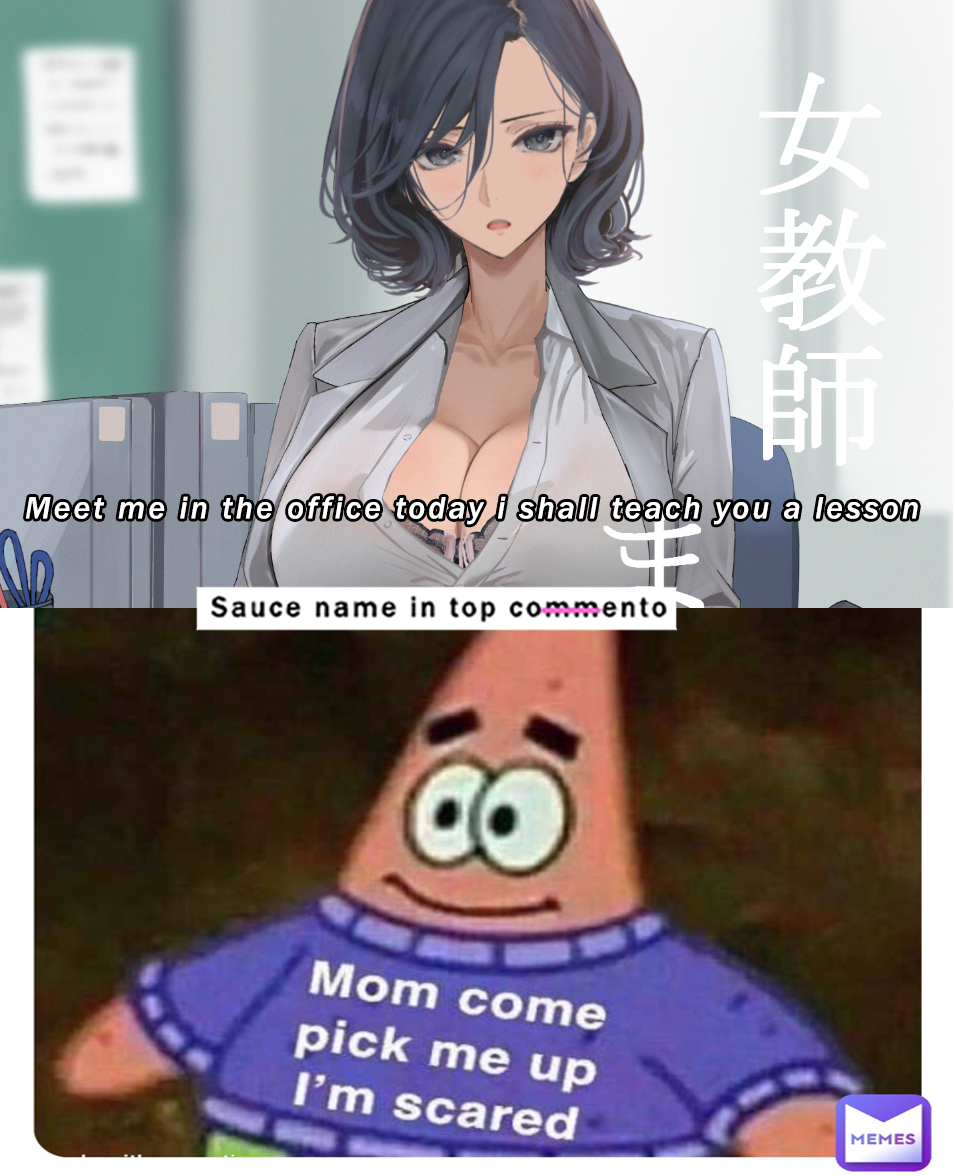
Higehiro: After Being Rejected, I Shaved and Took in a High School Runaway

Kokugo Sansuu Rika Fuuzoku [Gennsui
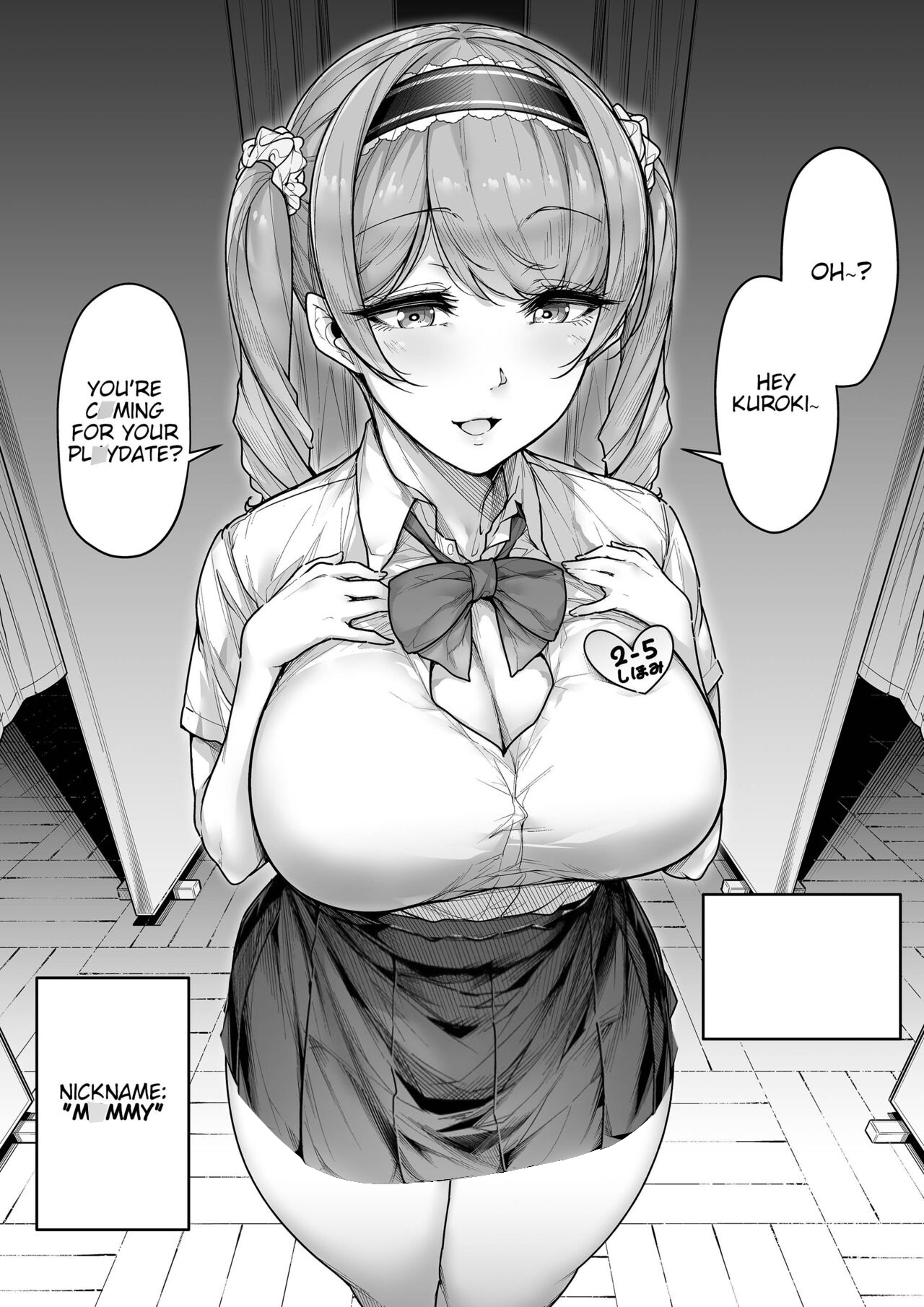
Yari Mansion ni Irasshai Hitozuma Kanrinin Hen
